

Why planets are referred to as wandering stars in astronomy
Our home is located on Earth, which is one of the eight major planets within our solar system. Apart from Earth, the Sun’s extensive family consists of Mercury, Venus, Mars, Jupiter, Saturn, Uranus, and Neptune. These planets are relatively smaller in size compared to the Sun, and they orbit around it. They are visible to us because they reflect some of the sunlight that reaches them. This brings up the question, why are planets called wandering stars? (Nowadays, they are referred to as “wandering luminaries.”) What is the connection between planets and stars, and why do they wander?
Stars and Planets: Similar but Different
It’s evident that stars and planets belong to distinct categories. Stars are enormous, gas-filled celestial bodies that emit light due to their extreme heat. On the other hand, planets, such as those found in our solar system, do not emit light as they are too cold for that (although they can be detected in infrared light!). Additionally, planets can have different compositions, ranging from gas giants like Jupiter to rocky planets like Mars and Earth, and even predominantly metallic ones like Mercury. Despite not glowing like stars, humans have been aware of the existence of planets for thousands of years.
But why is this so? It’s because planets reflect sunlight, making them visible to us in the sky .
Until 500 years ago, people had little knowledge about the nature of planets. There was a lack of understanding regarding their size, composition, and even their distance from Earth. However, observers could still identify what appeared to be planets in the night sky. Ancient astronomers closely observed these celestial bodies and documented their behavior.
So, what do planets look like when observed without the aid of a telescope? They resemble ordinary stars, to the point that individuals not particularly interested in astronomy would struggle to differentiate them. For instance, Saturn would appear indistinguishable from other stars to the naked eye. Although planets like Jupiter or Venus are noticeably brighter than typical stars, it still required additional knowledge to recognize them as planets rather than extremely luminous stars.
Stars that Wander: Planets
The ancient people possessed the wisdom to differentiate between planets and stars, recognizing that planets were not fixed like the stars in the sky.
While planets may appear similar to stars, they possess a remarkable quality – they are constantly in motion against the backdrop of the static stars.
The stars themselves remain stationary, unless we consider the daily movement of the stars from east (where they rise) to west (where they set). The planets, along with the Moon and the Sun, also experience this daily motion. Nowadays, we understand that this universal east-west movement of the sky is caused by the Earth rotating on its axis. However, no matter how much you observe the sky with the naked eye, you cannot detect any additional motion in the stars. Our ancient ancestors were well aware of the fact that the stars do not change their position. This is why the depictions of constellations have remained virtually unchanged for thousands of years.
It is of utmost significance that the celestial bodies exhibit distinct patterns of motion: certain planets traverse their orbits at a rapid pace, while others move at a more leisurely pace. Notably, there are two planets, Mercury and Venus, that consistently appear in close proximity to the Sun in the sky, whereas three other planets, namely Mars, Jupiter, and Saturn, can be observed on the opposite side of the sky, far away from the Sun.
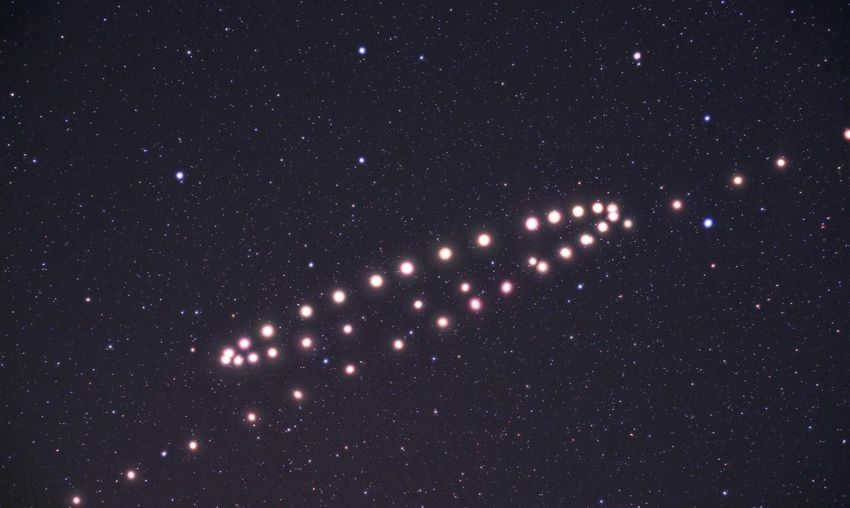
The retrograde motion of Mars occurs when it appears to move backward against the backdrop of stars. This composite image is created by stitching together multiple consecutive images of Mars captured during its opposition phase. Each subsequent image was taken one week after the previous one. Photo credit: Cenk E. Tezel, Tunç Tezel (TWAN)/APOD
Normally, planets traverse the sky from right to left (i.e., from west to east) relative to the stars. However, there are times when they pause and reverse their direction. They then pause again and resume their eastward motion, creating enigmatic loops. One common characteristic of all planets is that they exclusively navigate through the zodiacal constellations, just like the Sun and the Moon.
If the planets were to move in an organized manner, they would likely be referred to as “moving luminaries” or something similar. However, that is not the case, as planets are known as wandering stars! The reason for this is the complex and irregular motion of planets against the backdrop of ordinary stars, which led people to dub them as “wanderers” or “wandering” luminaries. Interestingly, the term “planet” itself translates from ancient Greek as “wandering”.
Here is an illustration that demonstrates why planets are called wandering stars. This animation showcases three bright stars positioned near the horizon: Saturn, Jupiter, and the reddish Mars. Each subsequent frame corresponds to the following day, with the full length representing four weeks. It is evident from the animation how Mars swiftly moves in relation to the stars and the two other planets. Figure: Stellarium/Evgeny Zolotavkin
The principles governing the movement of celestial bodies
Ancient astronomers were perplexed by the peculiar motion of the planets. It appeared to be highly unpredictable and almost chaotic, yet there was an underlying pattern to these movements. Could it be that the planets adhered to certain laws? Was there a concealed order dictating their motion?
The geocentric system of the world
For countless centuries, astronomers have dedicated themselves to uncovering the laws that govern the celestial bodies. Among the ancient Greek scholars, a theory emerged that elegantly explained the motion of the planets in the heavens. This theory not only provided accurate predictions of their future positions, but also positioned Earth as the center of the universe. According to this theory, known as the geocentric system, the Sun, Moon, planets, and stars all orbited around Earth in perfect circular paths.
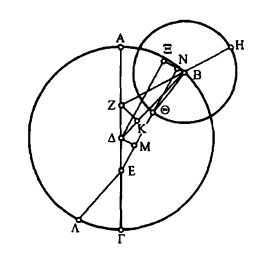
Ancient astronomers employed intricate geometric constructions to forecast the planetary positions in the celestial sphere. Source: Claudius Ptolemy. Almagest
However, as time passed, the theory ceased to yield precise predictions: minor inaccuracies accrued and the planets deviated from their projected trajectories. Consequently, the theory necessitated enhancement, but also became more convoluted. Thus, epicycles, deferents, equants, and other intricate geometric concepts were introduced to account for the planets’ loops, acceleration, and deceleration.
The revolutionary heliocentric model of the universe
After several millennia of the geocentric model dominating astronomical thought, a groundbreaking discovery was made around 500 years ago by the brilliant Polish astronomer Nicolaus Copernicus . He proposed a radical reimagining of the cosmos, placing the Sun at the center instead of Earth. According to this revolutionary heliocentric system, all planets, including Earth, orbit around the Sun. This momentous shift in perspective also redefined Earth’s status, elevating it from being merely the “center of the world,” the “firmament,” or the “dark ball,” to an actual planet. The term “heliocentric” originates from the Greek word helios, meaning the sun.
After another fifty years, Johannes Kepler, a German mathematician, formulated Kepler’s famous three laws. Specifically, the first law states that instead of moving in circles, the planets move on ellipses with the Sun at one of the focal points. It didn’t take long for Sir Isaac Newton to derive Kepler’s laws from the law of gravitation.
Thanks to the Copernican world system and Kepler’s laws, it became possible to predict the positions of the planets in the sky for centuries, and even millennia, to come. Equally important is the fact that these discoveries caused a true revolution in humanity’s conception of the universe’s structure.
Put simply, astronomy is the scientific field dedicated to researching the sky and celestial bodies. In ancient times, astronomers observed everything that occurred in the sky above the clouds – the sun and stars, the moon and planets, the northern lights and meteors, which are commonly known as “shooting stars.” Astronomers also paid attention to rare cosmic events like supernovae and the formation of new stars, as well as the appearance of comets with tails. Additionally, atmospheric phenomena like halos that occasionally encircle the moon or sun fell within the purview of astronomers.
In the present day, astronomers focus solely on studying objects and physical processes that exist beyond Earth’s dense atmosphere. They investigate cosmic bodies and the universe as a whole. In essence, astronomers explore the structure, origin, and development of celestial bodies.
Astronomers’ hard work has not been in vain. In the last few centuries, they have constructed a remarkable, awe-inspiring, and captivating depiction of the universe.
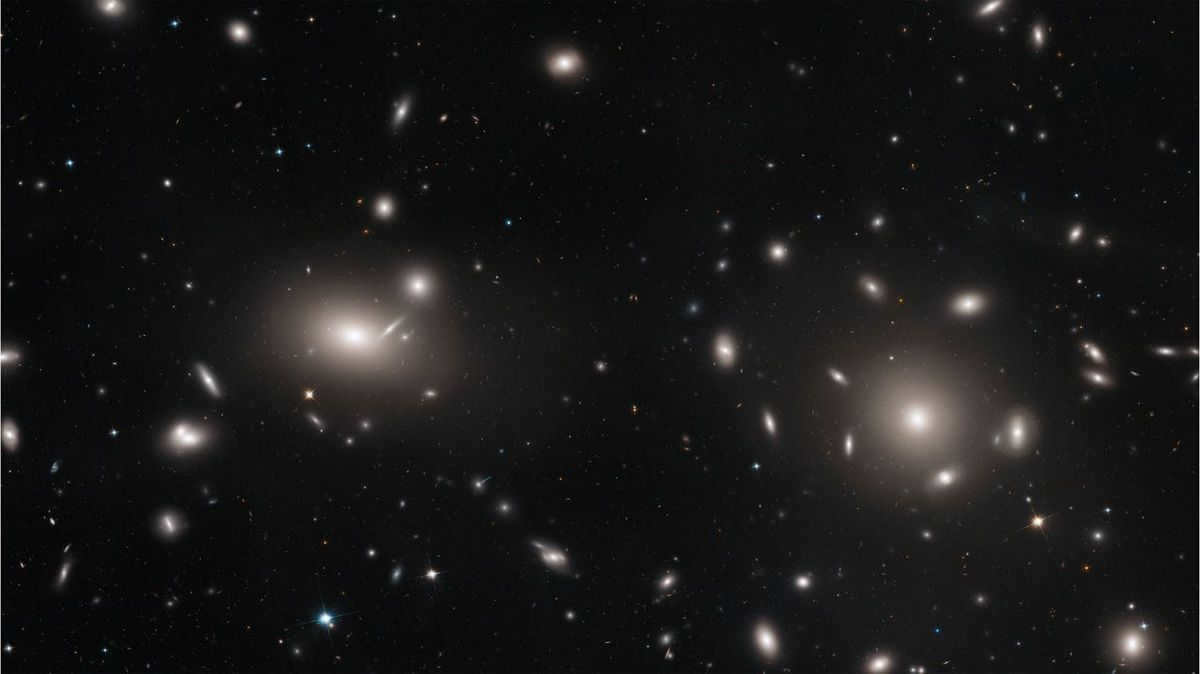
A collection of galaxies in the constellation of Veronica’s Hair. Image: NASA/Hubble
It transpires that we inhabit an immense, ever-expanding universe that is approximately fourteen billion years old. Our Universe is so vast that even light, which moves faster than anything else, takes billions of years to reach its far-flung corners (due to the Universe’s expansion, it will never be able to traverse it in the usual manner). The universe houses trillions of galaxies, each composed of billions upon billions of stars. Galaxies can be likened to islands of stars, separated by vast, almost entirely starless regions.
We are located within one of the many galaxies in the universe, known as the Milky Way . The Milky Way consists of approximately 400 billion stars, including our very own Sun. Every star visible in the night sky belongs to the Milky Way.
The Sun is classified as an average star – not too large or small, bright or dim, or heavy or light. It falls somewhere in the middle among the vast assortment of stars.
Surrounding the Sun are eight major planets, several dwarf planets, countless asteroids, comets, and numerous smaller celestial bodies such as rocks and meteoroids. Collectively, these entities form the solar system.
Not too long ago, the existence of similar systems around other stars was uncertain. However, over the past three decades, astronomers have developed techniques to detect and investigate such systems. It has been discovered that nearly every star within our galaxy possesses at least one planet. It won’t be long before scientists are able to distinguish Earth-like planets that bear resemblance to our own planet.
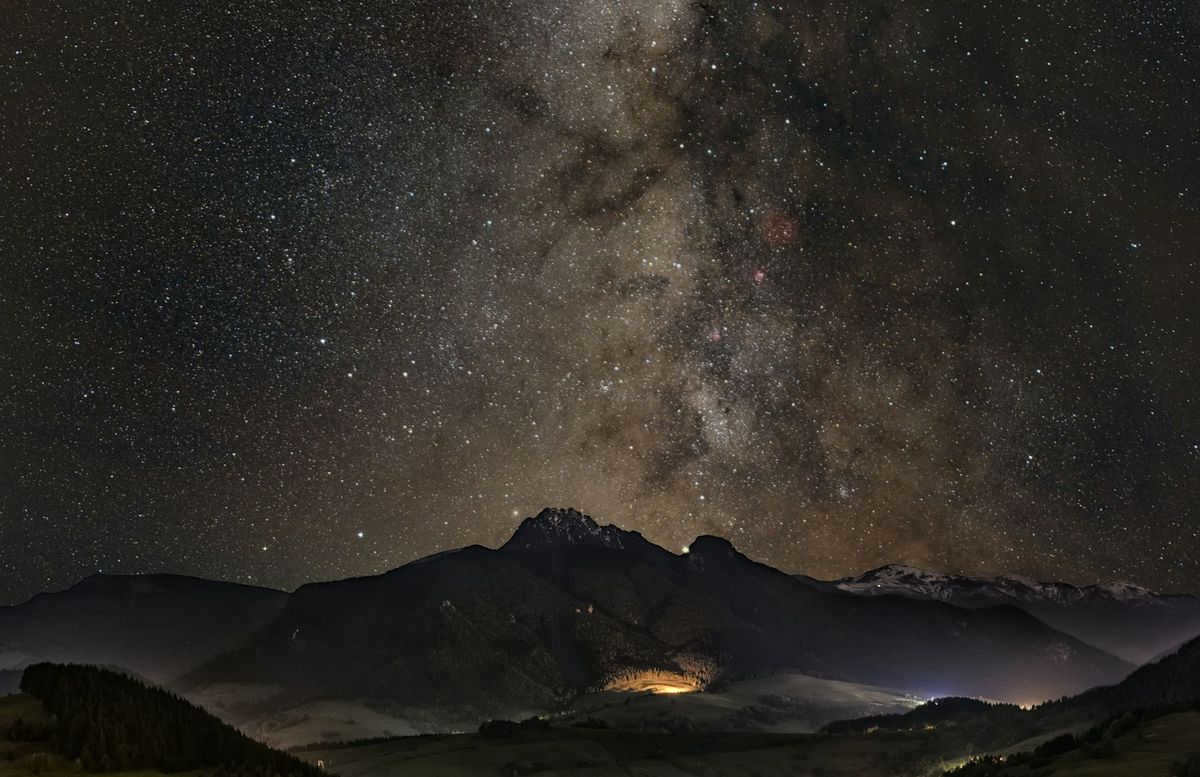
Over the mountains in Slovakia, the Milky Way can be seen. Photo credit goes to Vaclav Hyza.
Currently, there exist numerous captivating books that showcase stunning color illustrations, providing detailed descriptions of the planets within our solar system, stars, the structure of the Milky Way, and other galaxies. Additionally, these books delve into the history and evolution of the entire universe. However, what is often left unmentioned is the fact that a vast number of these magnificent celestial objects are visible to the naked eye, should one wish to partake in such observation. In certain instances, a small telescope or even binoculars may be required, while in other cases, one’s eyes alone may suffice in witnessing various astronomical phenomena.
Astronomy: A Fascinating Hobby
Astronomy, often considered an exact science akin to math or physics, requires a deep understanding of physics and sometimes even chemistry, as well as specialized mathematical tools and programming skills. Furthermore, it involves a continuous process of refining existing knowledge and diligently searching for the unknown.
While astronomers themselves view their profession as highly romantic, many individuals find the abundance of formulas and calculations daunting and uninteresting.
If you happen to be one of those people, I want to assure you that you do not need to possess a mathematical mind in order to engage in astronomy and appreciate the breathtaking beauty of the night sky!
So, what do you require to get started?
To begin with, all you really need is an unobstructed and, if possible, dimly lit sky. (Finding such a sky is increasingly challenging in modern times!) If you derive pleasure from gazing at the celestial bodies, including stars, constellations, meteors, the moon, and the planets’ motion, you might want to delve deeper into the vast expanse of the night sky. In that case, you have the option to select either a pair of binoculars or an affordable telescope for your overall observations.
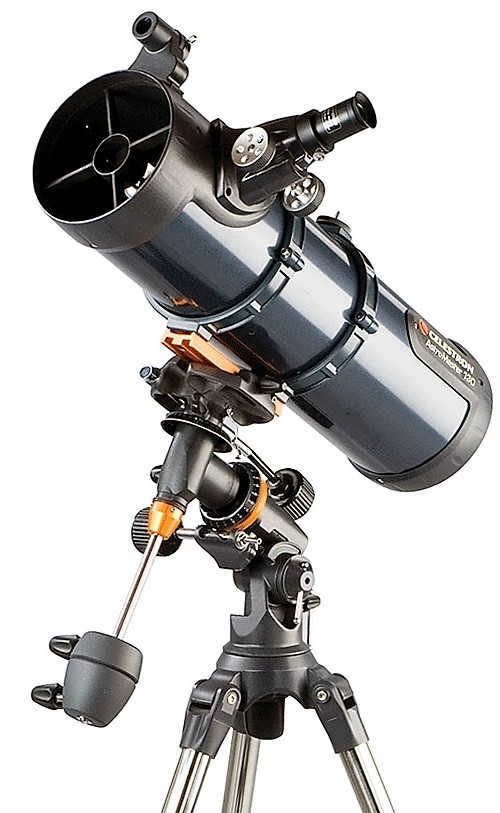
The Celestron Astromaster 130 eq is an affordable amateur telescope designed for observing the stars using an equatorial mount (tripod). Source: Rother Valley Optics
As you continue your stargazing journey, you will discover certain objects or types of observations that you prefer over others. When this happens, it may be time to invest in specialized equipment that is more expensive but offers better quality.
Perhaps the resources you currently possess will suffice, and you will derive pleasure from leisurely strolls beneath the celestial bodies. Alternatively, there may come a time when you realize that observing the cosmos is simply not your cup of tea, and you move on. Similar to any pastime, amateur astronomy primarily offers amusement and relaxation, with everything else following suit. If you fail to experience positive emotions while gazing upon the starry expanse, then it is best to abstain.
By the way, if I were in your shoes, I would not underestimate the intellectual aspect of astronomical observations. Were you aware that contemporary astronomy enthusiasts frequently make astounding discoveries? They stumble upon uncharted celestial entities such as asteroids and comets, variable stars, supernovae, newborn stars, and even previously unknown nebulae!
You have the opportunity to personally make a groundbreaking discovery in the field of astronomy! (Of course, this won’t happen right away, but after gaining some basic experience in observing celestial phenomena.) This is no laughing matter! With a plethora of state-of-the-art telescopes now available to professional astronomers, the possibilities are endless! The reality is that large telescopes are primarily utilized for observing specific celestial objects – nobody would use the Hubble Space Telescope to search for new comets or closely monitor Jupiter. That’s precisely why ambitious amateur astronomers have ample opportunities to contribute.
If you’re interested in learning more about the endeavors of amateur astronomers, you can find additional information here.
Astronomy does not have the ability to forecast or determine a person’s destiny or personality based on the stars. This is the realm of astrology. Astronomers often take offense when they are mistakenly referred to as astrologers. In reality, astronomers firmly believe that it is impossible to predict the future of individuals or the world solely based on the movements of celestial bodies.
However, there exists a correlation between astronomy and astrology. In earlier times, when the scientific method had not yet been established, the distinction between astronomy and astrology was not well-defined. In reality, the advancement of astronomy in ancient times was driven not only by practical necessities like the calendar, but also by the astrological desires of those in power. Seeking knowledge of the future, monarchs and rulers provided patronage to astrologers, thereby indirectly fostering the progress of astronomy, since without it, the prediction of the positions of celestial bodies in the future would be unattainable.
How to get started with studying astronomy?
If you have an interest in the night sky but lack knowledge about astronomy, it can be challenging to begin observing. Even when reading popular online articles, it is often difficult to distinguish between planets and stars. What are the various phases of the moon? What are faint stars? What is a conjunction of planets? And what do terms like brilliance, brightness, and luminosity mean?
There are moments when the objects studied in astronomy can be unclear. For instance, you might not understand the differences between planets and stars or what galaxies are.
When faced with a plethora of unfamiliar jargon, confusion is bound to follow. That’s why it’s best to start by delving into popular astronomy books or engaging with astronomy forums, where you can discover a wealth of straightforward and valuable information. Alternatively, you can peruse the introductory articles available on this website.
With the aim of aiding astronomy novices in catching up, I trust that this article will prove beneficial.
In the vast expanse of space, there may exist countless planets unattached to a central star. Termed nomad planets (also referred to as floating, interstellar, or orphan planets), astronomers and enthusiasts of science fiction have long been captivated by the possibility of their existence.
These planets can emerge after being expelled from their orbits between solar systems, or they can form when an interstellar cloud collapses. In any case, they eventually traverse the Milky Way. Can Earth also transform into such a planet? Can a rogue planet pass through our solar system? The discovery of rogue planets compels us to reconsider some fundamental concepts, from the formation of planets to their placement in orbit.
Simultaneously, these wanderers have made us realize that we are not as solitary as we previously believed on a planetary scale. In reality, we may have numerous additional contenders for habitable planets besides exoplanets. Indeed, nomadic planets could potentially harbor life.
Frightening aspects of planetary nomads
The concept of nomadic planets was first brought to the public’s attention in the middle of 2011, thanks to a research conducted by Takahiro Sumi, an astrophysicist from Osaka University in Japan. Sumi and his team utilized gravitational microlensing, a method commonly used to identify exoplanets across the galaxy. By observing the distortion of light from a background source, such as a star, caused by an object passing between the source and Earth, they were able to temporarily magnify the light. In their study, Sumi and his colleagues discovered 10 planets with a mass similar to Jupiter that appeared to be moving without following a recognizable orbit.
As previously mentioned, the hypothesis suggests that these objects might have originated from the same gas and dust clouds that give rise to stars, or alternatively, they could have been captured by solar systems and removed from their original orbits. Consequently, solar systems have the potential to attract and retain nomadic planets, resulting in their placement in wide orbits. It’s entirely plausible that our solar system once harbored a greater number of planets than our current knowledge encompasses.
There exists the possibility that Earth could come into contact with such a rogue planet, albeit the likelihood is small. However, our galaxy is teeming with smaller, more dispersed threats that pose an equal amount of danger. The chances of our demise at the hands of a comet or an asteroid measuring a few kilometers in diameter are significantly higher.
Sumi’s initial research indicated that every star in our galaxy may possess two or three wandering planets. However, a subsequent investigation conducted by the Kavli Institute at Stanford, less than a year later, revised this estimation, suggesting that each star in the Milky Way could potentially harbor up to 100,000 nomadic planets.
Several factors contribute to this hypothesis:
- The gravitational influence exerted by the Milky Way;
- The availability of matter necessary for the formation of nomadic planets;
- The manner in which matter organizes itself within a planet, ranging in size from Pluto to Jupiter.
If proven accurate, this theory raises intriguing questions about the formation of planets and the significance of nomadic planets within our galaxy. However, for now, let us focus on the information at hand and explore the various possibilities that lie ahead.
What is the origin of wandering planets?
Let’s explore the possible sources of drifting planets. Much of the current understanding of these celestial bodies is derived from studying our own solar system and other young solar systems in our galaxy.
It is important to note that wandering planets can vary in terms of size and composition. Sumi’s research initially revealed Jupiter-class planets as nomadic entities, suggesting that smaller planets with less mass could also be expelled from their original systems. In fact, smaller planets may be more likely to be ejected from a developing planetary system. On the other hand, larger planets may naturally emerge as outcasts from star-forming clusters.
The concept of ejection is based on the notion that nomadic planets experience gravitational forces from various sources, including other stars and neighboring planets. To illustrate how this process could occur, scientists analyze Jupiter-like planets in different solar systems, which maintain orbits in close proximity to their respective suns. Now, envision a scenario where our own Jupiter gradually reduces its orbit and approaches the sun. With a mass over 300 times greater than that of Earth, Jupiter possesses a substantial gravitational field.
Another suggestion suggests that if a star goes supernova, a planet may be expelled from the solar system. Naturally, some planets would be obliterated in a violent explosion, but those that survive would be propelled outward into space, no longer bound to their original star.
Once outside the solar system, a wandering planet could be influenced by various gravitational forces. Computational simulations have indicated that if a planet is ejected early in the formation of a star cluster, it is likely to be drawn into a wide, unrestricted orbit around a neighboring star. The larger the star, the greater the chance of capturing a wandering planet. Computer models also suggest that it is entirely possible for a wandering planet to be ensnared by the gravitational pull of black holes.
There are other options that involve planets orbiting the Milky Way galaxy in a wide trajectory. This implies that they are still part of the galactic dance floor and moving along with the crowd, but they are not traveling in a pack. Ultimately, it is completely plausible for two wandering planets to encounter each other and create their own binary system – simply a pair of solitary planets engaging in a romantic dance in the vastness of space.
What are the potential conditions on a roaming planet?
We cannot be certain about this until we conduct research on roaming planets. However, there are certain assumptions that can be made based on our observations of planets, dwarf planets, and moons in our own solar system and beyond. Let’s explore some of the possible characteristics of roaming planets.
Presence of day and night? Unlikely. As we already understand, our day and night cycles are determined by our proximity to the sun. Without a nearby sun, traditional day and night cycles would not exist. Consequently, the process of photosynthesis can probably be ruled out.
Can a nomadic planet have an atmosphere? Absolutely, a nomadic planet has the potential to possess an atmosphere. In order for a planet to sustain an atmosphere, it must possess sufficient gravitational force to retain gases and maintain low temperatures to prevent the gases from dissipating and evaporating into space. Take, for example, the farthest reaches of our solar system where even the diminutive Pluto manages to preserve its own atmosphere. Therefore, it is plausible for a nomadic planet to uphold an atmosphere, although it may not meet the same criteria as Earth.
Is it possible for them to possess water? It is probable that certain nomadic planets could contain water – or, more possibly, ice. Through the utilization of unmanned stations and satellites, scientists have discovered ice on Mars and indications of ancient liquid water. Conversely, Europa, one of Jupiter’s moons in our solar system, showcases a surface comprised of ice that conceals an ocean of water. If we manage to detect water on other planets and moons within our own solar system, the probability of its existence on certain nomads is also quite high. When we consider the fact that there are approximately 100,000 nomadic planets for each star in our galaxy, the potential for such occurrences quickly multiplies.
Is it possible for life to exist on rogue planets?
Could interstellar space within our galaxy be teeming with life? It’s a possibility. Based on our understanding of other planets, it is reasonable to assume that wandering planets share some similarities. While the majority of planets we have encountered thus far cannot sustain life as we know it, the sheer number of galactic possibilities suggests that life could indeed exist. This notion has been substantiated by our findings.
In the future, it is possible for humans to inhabit a wandering planet. Proxima Centauri, which is the nearest star to our Sun, is located at a considerable distance of 4.22 light-years away from Earth. These nomadic planets could play a crucial role in human space exploration. Once we venture beyond our solar system, we could make use of these hospitable wandering planets to journey to another star system. On the other hand, given the abundance of planets, it might not even be necessary to travel to another star in order to discover new ones. This vast expanse of darkness between the sun and the stars suddenly becomes full of possibilities – and unanswered questions.
A planet derives from the ancient Greek term “wandering star”.”a wandering star”. The reason for this terminology is that the “actual” stars remain fixed in their positions, while the planets traverse the sky. The ancient Greeks, unaware that they were observing not only stars but also planets, found this behavior perplexing, hence the name.
However, unlike the ancient Greeks, we perceive the planets of the Solar System as our “home” rather than as “wandering” inhabitants of the universe. This is because each planet follows a precisely defined orbit around the Sun. When examining other planetary systems and the behavior of exoplanets, we observe a similar pattern – the planets are not really “wandering” but rather gravitationally “anchored” to their stars.
Do wandering planets truly exist, freely traversing space without a circular orbit? Absolutely, there are such celestial bodies, although it is more fitting to refer to them as rogue planets or even orphan planets. For they are truly devoid not only of companion planets, but even a star to call their own!
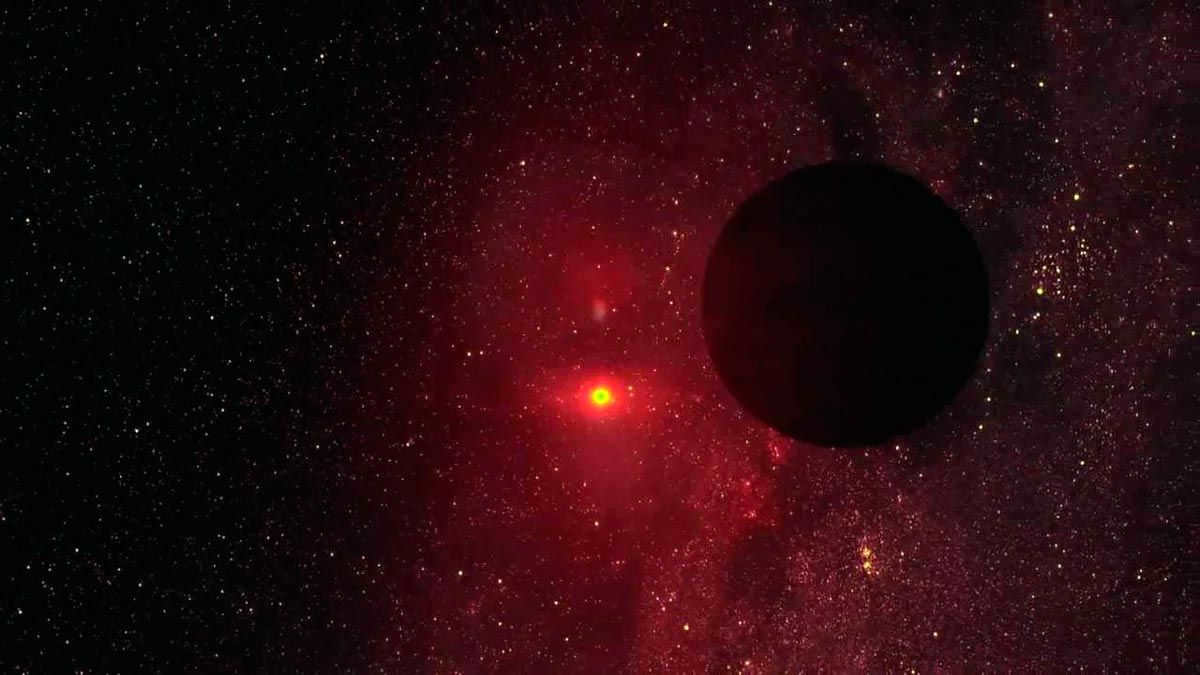
Discovering wandering planets is a challenging task due to their small size and lack of light emission. Despite these obstacles, scientists have managed to find a significant number of these elusive celestial objects. The actual number of wandering planets that exist remains a mystery and is potentially overwhelming!
A variety of terms have been used to describe wandering planets, including interstellar planets, wandering planets (commonly used abroad), planemos, free-floating planets, sunless planets, quasi-planets, or simply solitary planets.
It is estimated that the number of wandering planets in our galaxy, the Milky Way, can reach an incredibly high number, surpassing the number of visible stars by up to 100,000 times, which equates to approximately 100 billion. However, unlike stars, these planets are not easy to locate due to their lack of a star to reflect light from.
To detect these homeless planets, scientists use the method of gravitational microlensing, which involves observing the gravitational influence of a massive object passing in front of a star, even though the object itself does not emit light.
What is a wandering planet?
A wandering planet, also known as an interstellar planet, is a celestial object that shares many characteristics with a traditional planet. It is spherical in shape and has a mass similar to that of a planet. However, what sets a wandering planet apart is that it is not gravitationally bound to any star, brown dwarf, or even another planet, although it may have satellites. Unlike planets that orbit around a star or the galactic nucleus, a wandering planet drifts freely through space, unattached to any specific gravitational force.
But where do these wandering planets come from? There are two main theories:
- One possibility is that a wandering planet was once part of a planetary system but was ejected during a cosmic cataclysm. This event could have been caused by a collision with another celestial object or a gravitational disruption within the system.
- Thus, the initial choice remains more suitable in accordance with our definition. This is particularly true since a sub-brown dwarf still suggests a size comparable to that of a few Jupiter masses, signifying a star – a significantly large entity. Meanwhile, researchers, who examined over 2.6 thousand observations of rogue planets conducted between 2010 and 2015, deduced that orphan planets are normally super-Earths. In other words, they are substantial celestial bodies, but their dimensions are more or less comparable to Earth rather than Jupiter.
Is it possible for a nomadic planet to sustain life?
When we discuss a nomadic planet, our minds typically conjure up images of a colossal celestial body made up of rock and ice, similar to Ceres but much larger in scale. However, a nomadic planet doesn’t necessarily have to fit this description. According to astrophysicist Sean Raymond from the Bordeaux Astrophysics Laboratory in France, some of these rogue planets may possess dense atmospheres.
Admittedly, these wandering planets emit very little heat themselves and are not warmed by external sources. Nevertheless, massive objects like Jupiter, drifting through interstellar space, could maintain a dense atmosphere that would prevent the planet’s surface from freezing. This effect would be further enhanced by a thick hydrogen atmosphere that is opaque to infrared radiation, effectively trapping the heat generated by the planet’s core.
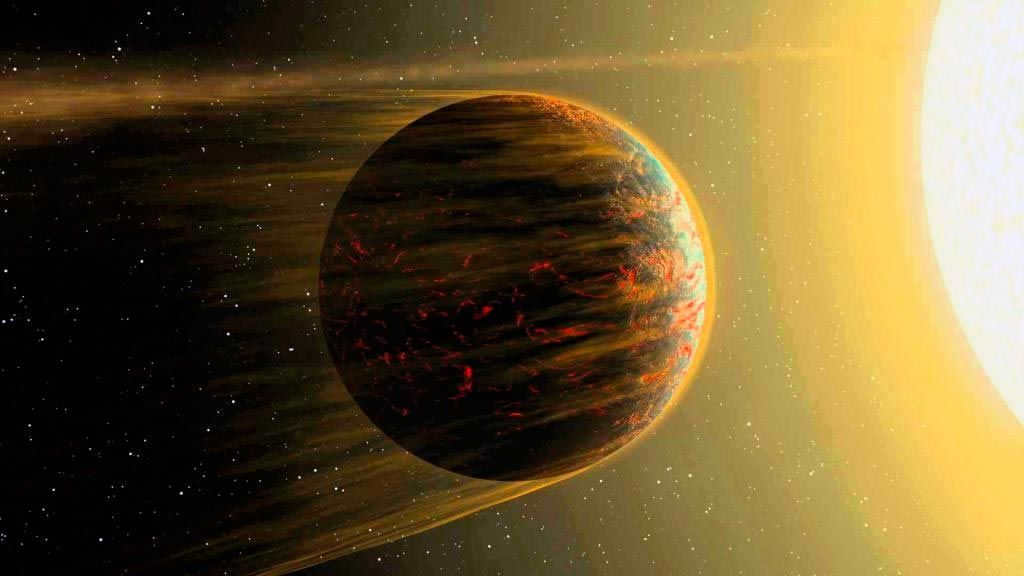
Undoubtedly, a wandering planet presents a significantly higher risk compared to a meteorite. However, the vastness of space makes it difficult to truly consider the potential for a collision with a wandering planet.
It has been estimated that a hydrogen pressure greater than one thousand atmospheres would create an almost ideal adiabatic process for an object with the same mass as the Earth. The decay energy of radioactive isotopes would be enough to maintain a positive temperature on the surface, potentially allowing for the existence of liquid water. These conditions could lead to high geological activity and the presence of underwater volcanoes, as well as a strong magnetic field that protects the planet from cosmic radiation. These factors could serve as a potential energy source for the emergence of life.
Is it possible for a planet to be wandering in the solar system?
Almost 300 years ago, the mythical fifth planet in the solar system was first sought after in relation to the Titius-Bode rule, but no evidence was found. The search for the fifth planet (nowadays referred to as the fifth, but the ninth planet) began in modern times, when it was discovered through mathematical modeling of the solar system’s planet orbits that Jupiter’s orbit must have been much closer to the Sun during the system’s formation than it is today.
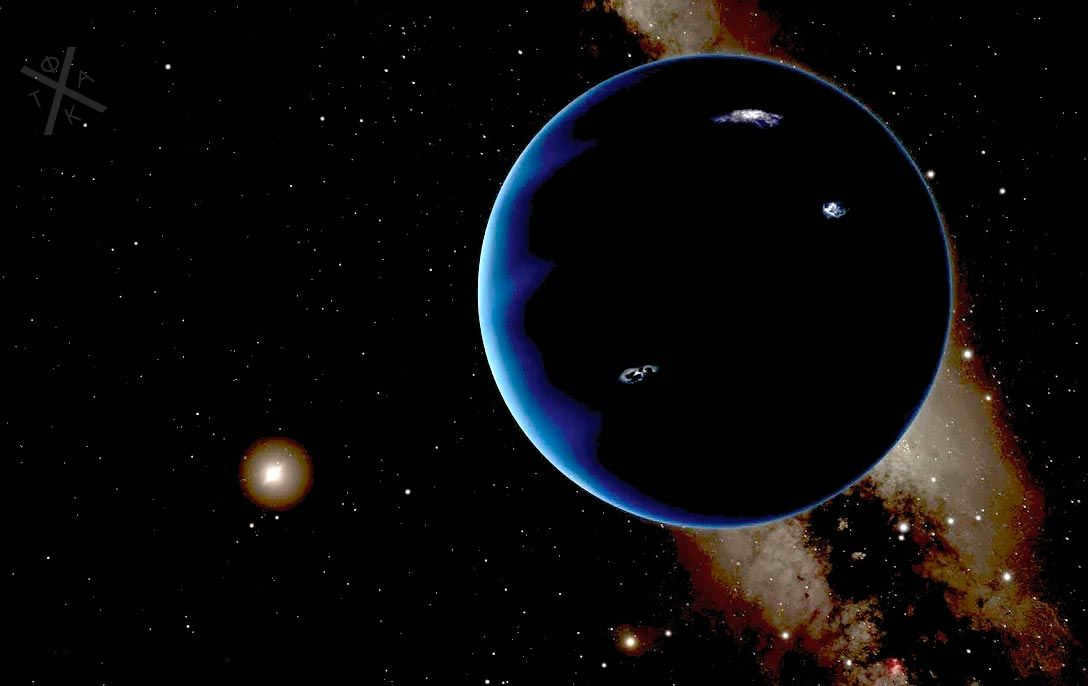
In order for Jupiter to approach closer, it would have to displace smaller celestial bodies within the system. However, this would result in potential collisions between the planets in the Earth group. Another option would be for Jupiter to “jump” closer, but in doing so, it would risk pushing Uranus or Neptune out of the system.
Both of these scenarios seem unlikely. However, if we hypothesize that during the initial formation of the solar system, there were not four, but five gigantic gas planets, then all the pieces of the puzzle fit together. It is possible that this mysterious fifth gas giant was ejected by Jupiter, either ending up in a far-off orbit or leaving the confines of the solar system altogether. Other gas giants, such as Neptune, have also experienced significant displacement. For instance, Neptune transitioned from a position in close proximity to Jupiter and Saturn to a much more distant orbit beyond Uranus, ultimately settling at the far reaches of the solar system.
The theory of the fifth planet in our solar system (2011) was formulated by astronomer David Nesvorny, who also conducted all the necessary calculations. According to Nesvorny, the likelihood of the “lost” planet having shifted to a distant orbit around the Sun is extremely low, and it is highly probable that it has permanently departed the solar system, becoming a wandering planet or an exiled planet among the realm of space travelers.
This concept traces its origins back to the ancient Greeks. They observed that while the fixed stars in the sky remain in place, the planets, due to their orbit around the Sun, appear to move in relation to the stars. Depending on their position, the planets can be found within a particular constellation, shift to another constellation, or even become invisible.
Ultimately, it was a scientist who first coined the term “lost” planet, and this is how it became widely known.)))
Our understanding of the stars and the universe is extremely limited – everything we think we know is based on mere conjecture and hypotheses. It’s possible that our current understanding is completely off the mark.
Occasionally, planets embark on their own odyssey through the enigmatic cosmos, existing in solitude without any stellar companion. What causes these nomadic planets to come into existence and what is their purpose?
We are accustomed to perceiving the Solar System as an orderly construction. Each planet dutifully revolves around its parent star, arranged in a precise pattern of ellipses and rings. Even the asteroid belt adheres to its designated orbit. The planets obediently follow their prescribed paths, destined to orbit for eternity. Oh, Pluto, you are not permitted to venture beyond and mingle with the other planets. Instead, you shall have lunch under the watchful gaze of Haumea until we determine an appropriate punishment for your failure to tidy up your play area.
Some planets simply cannot contain themselves. They are akin to rebellious icons such as Jimmy Dean, grizzers, Marlon Brando, and Coldblood Luke. They defy all rules and live by their own code. They resemble the Rolling Stones in this regard. Rather than conforming to the normal pattern of orbiting around a star, these planets become wanderers and venture off into deep space, perhaps in search of recognition, wealth, and excitement.
A wandering planet refers to any planet that does not adhere to the conventional practice of orbiting around a star. Instead of belonging to a specific star system, it orbits around the Milky Way itself or is expelled from our galaxy altogether. Make no mistake, there are numerous planets affected by this phenomenon. According to some estimates, there are billions of wandering planets in the Milky Way.
What is the process by which planets become wandering planets? The answer lies in their formation. Some wandering planets initially originate as part of a star system but undergo certain events that lead to their expulsion into deep space. These events could be triggered by collisions or close encounters with other stars, or even encounters with black holes. When two stars come into close proximity to each other, their gravitational interaction can disrupt the meticulously organized orbital system. As a result, planets may be propelled into orbits that are either closer or farther from their star, collide with the star itself, or achieve escape velocity, causing them to forever abandon their previous orbits.
It may seem impossible, but planets have the ability to take flight when their star vanishes. Occasionally, stars explode into supernovae, causing a powerful blast that propels planets away from their original star at astonishing speeds, scattering them like billiard balls across the room. However, the majority of roaming planets most likely originated during the chaotic early stages of their star systems, when celestial bodies collided with one another. These collisions may have disrupted smaller neighboring planets in the system, with Jupiter being a prime example.
Alternatively, planets could have formed as solitary wanderers in distant nebulas, far removed from any stars. If pockets of hydrogen coalesce into a spherical shape but lack sufficient mass to ignite thermonuclear fusion and become a star, they become another type of wandering planet.
What would the appearance of these planets be? Devoid of illumination from a celestial body, they would exist as an exceedingly frigid realm. This is not merely a metaphorical statement. The outer layers would possess a temperature akin to that of the interstellar expanse, just a few degrees above absolute zero. However, deep beneath the planetary surface, there may still linger residual heat from their formation, thereby presenting the potential for the sustenance of life. Such lifeforms would persist within a cozy, heated enclosure.
Furthermore, it is plausible to speculate that billions of years in the future, the wandering planet could undergo gravitational capture by another star, thus experiencing a reawakening. It may be subjected to irradiation, providing it with a second chance at survival, or it may meet a tragic demise. There exist numerous pathways through which a planet can become a wandering planet. It is even conceivable that there are a greater number of wandering planets within the Milky Way galaxy than there are individual stars themselves.
The article you are currently reading is titled “What is the process of planets becoming wandering planets?”.

To comprehend the distinction between stars and planets, we must initially examine their respective descriptions. A star is a colossal luminous sphere composed of gas undergoing thermonuclear reactions within its core. Conversely, a planet is a frigid, spherical entity devoid of such reactions.
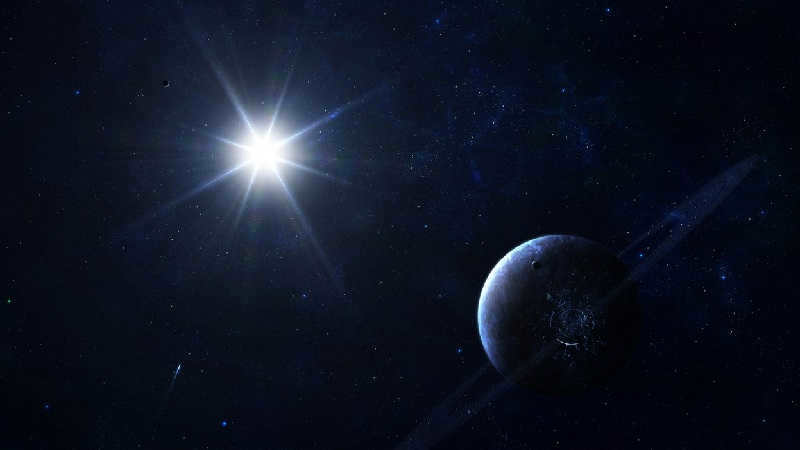
Distinguishing characteristics
Undoubtedly, stars and planets possess several common traits.
Firstly, they are celestial bodies that originate from particles of matter and gases. Secondly, their composition and shape exhibit resemblances (both have a spherical form). Each displays a core, internal and external regions, as well as an atmosphere.
Thirdly, their movements differ slightly, albeit both gravitate within orbits.
Furthermore, these celestial entities are observable even to the unaided eye, owing to their luminosity.
In addition, they compose star systems, yet in these systems, planets revolve around stars.
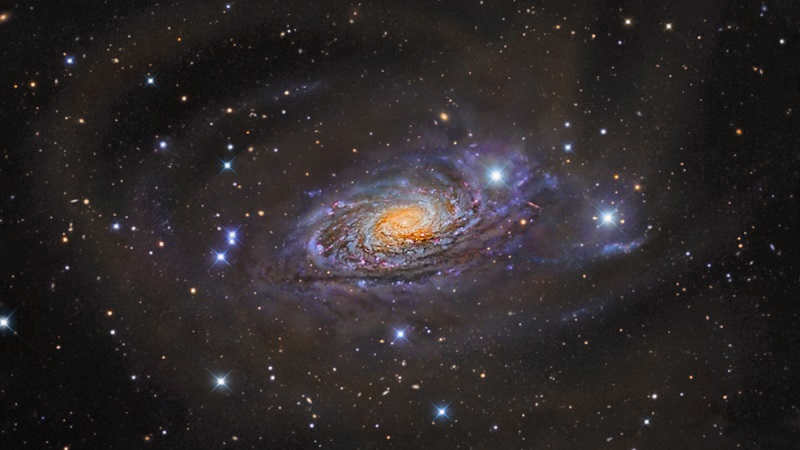
How planets are distinct from stars
First and foremost, the distinction lies in their luminosity. Both entities possess this characteristic, but there is a crucial difference. Stars generate energy and emit light through nuclear reactions and high temperatures, whereas planets, though luminous, do not emit light but instead reflect starlight.
It is important to note that temperature is directly correlated to the cause of luminosity, making it another distinguishing factor. Stars are incandescent, whereas planets are not.
Unlike stars, planets have a uniform reflection of light due to their cold nature. In contrast, luminaries emit light unevenly due to their high temperature and the thermonuclear fusion processes occurring within them. They flare up and then appear to fade away, which is why the twinkling of luminaries is often discussed.
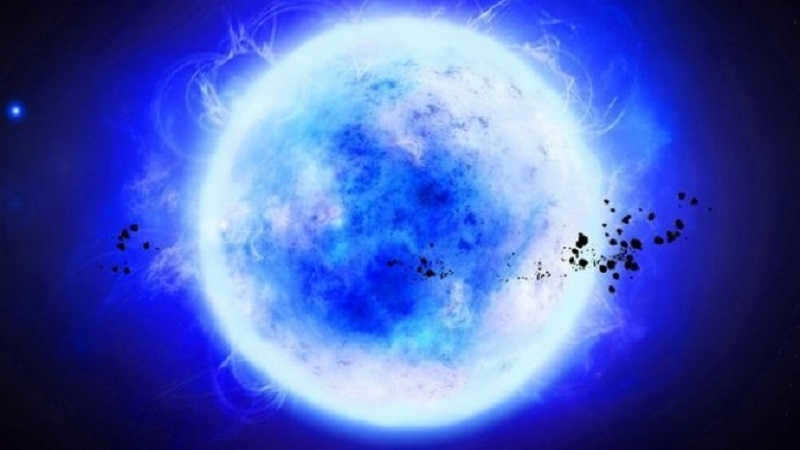
Therefore, when observing the night sky, it is possible to distinguish the planets within our solar system from the stars. In simple terms, if a bright point of light flickers, it is a star. However, if the light remains constant, it indicates a planet.
Which do you believe is larger, a star or a planet? In reality, a planet is smaller in size compared to a star. It is always significantly smaller than a star.
What are the visual distinctions between planets and stars?
When gazing at the night sky, we are greeted by shining points of light, which can be either stars or planets. But how can we differentiate between the two? It’s actually quite straightforward. Only the planets within our solar system are visible from Earth, while the others remain hidden from our sight. This is because their immense distance and smaller size prevent their reflected light from reaching us.
Movement is another key contrast between these celestial bodies. Planets revolve around a star and also spin on their own axis, whereas stars orbit around the center of their galaxy. While stars may appear stationary in the sky, planets gradually shift their positions over time. This is how ancient civilizations were able to discern planets from stars.
Certainly, there are other distinctive characteristics. It is true that identifying them necessitates the utilization of specialized apparatus. For instance, through spectral analysis, astronomers can ascertain the elemental composition of the entity and thus discern its identity.

So, to summarize, we can highlight the distinctions between a planet and a star: temperature, brightness, size, and their movement. Undoubtedly, there are numerous objects, celestial bodies, and systems in outer space, which, in turn, comprise and create other entities. It resembles a universal chain in which one thing leads to another. And this process is never-ending. However, it possesses its own beauty.
Indeed, it is not always effortless to differentiate cosmic objects from one another. In some cases, basic observations or knowledge suffice, while in others, the assistance of experts and scientists is required. I trust that this article has aided you in comprehending the distinctions between a planet and a star.
It’s not surprising that the discovery of a new exoplanet, unattached to any star, may not generate much excitement anymore. Astronomers have already found numerous such solitary planets in recent years, to the point where they are becoming the norm rather than the exception in the Universe.
In fact, a study conducted in 2011 suggested that the number of orphan planets in our galaxy exceeds the number of typical planets orbiting their parent stars by at least 50 percent. This would mean that there are approximately one billion lonely planets in the Milky Way galaxy.
According to scientists, gas giants may be a minority among the solitary planets that scurry about. “In today’s understanding, we are aware that massive solitary planets are quite uncommon and that typically among them are planets with a mass comparable to that of Neptune or Earth,”
the astronomers stated. – We also have knowledge that massive objects are more likely to have difficulty escaping star systems compared to lighter ones.” Remarkably, these solitary planets are relatively close to us. Future telescopes will provide further insight into these solitary planets that will not be obscured by nearby luminous stars.
These celestial nomads, known as free-floating planets, have been dubbed by scientists as such because they have managed to escape the confines of their original solar systems. However, recent research suggests that these wandering worlds may have actually formed independently, and the sheer number of them is staggering – billions in total.
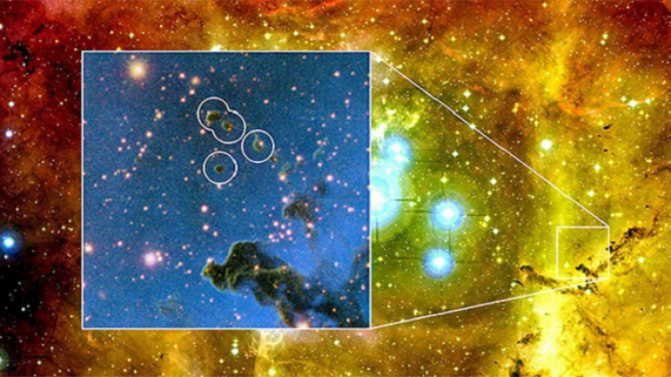
The truth is, not too long ago scientists made a discovery about the existence of planets that are not bound by the gravitational pull of a star and therefore do not orbit any star.
Last year, astronomers made an exciting finding when they spotted CFBDSIRJ2149, which is the closest known free-floating planet to us. This interesting planet is located 100 light-years away and has a mass ranging between 4 and 7 times that of Jupiter. What’s even more intriguing is that this free-floating planet appears to be a dull dark red color when observed in visible light.
And the most fascinating aspect is that it is just aimlessly drifting through the vastness of space.
Until now, it has been assumed by scientists that these planets, of which only a few are known, were created within existing planetary systems but then somehow became detached and moved away from their parent star due to a significant gravitational event, for example. Alternatively, it was thought that they became separated because the parent star ceased to exist. However, evidence has already been found to support the existence of planets in close proximity to deceased stars.
Recent observations of small, dark clouds known as globulets have revealed that planets can actually form independently, without the need for a pre-existing planetary system. This suggests that there may be a second method of planet formation, in addition to the widely accepted accretion disk theory.
The detection was announced by a group of astronomers hailing from Sweden and Finland who were observing small clouds in the Rosette Nebula, an enormous accumulation of dust and gas located 4,600 light-years away. Within this nebula, there exist numerous “tiny” (in cosmic terms) clouds that have a diameter no greater than the distance between the Sun and Neptune. These small clouds, known as globulets, possess an extremely high density, just slightly less dense than Jupiter’s 13 times the mass. It appears that these specks of gas and dust have the potential to give rise to a planet.
Measurements have indicated that globulets with dense cores have the possibility of collapsing due to their own gravitational force. This occurrence results in the formation of a certain celestial object.
Several of these formations can be classified as brown dwarfs – large celestial bodies that are unable to ignite and become stars. Additionally, considering the velocity at which globulettes move within the nebula – approximately 80,000 kilometers per hour – it is likely that some rogue planets will collide.
“Our hypothesis is that these small spherical formations originated from tall dusty columns of gas that were created by the intense radiation emitted by young stars,” explains an astronomer affiliated with the University of Helsinki. – “They fragmented away from the core of the nebula due to the intense pressure exerted by the central hot stars.”
In the spring of 2011, a groundbreaking study was published which completely revolutionized our understanding of the universe. This study unveiled the existence of 10 solitary planets that are traversing our galaxy in isolation. Basic calculations suggest that this astounding discovery is only the tip of the iceberg, as there are likely millions of these enigmatic black worlds awaiting our exploration. What’s more, simulations of the conditions on these solitary planets indicate that they may even harbor life…
Imagine a desolate black world, hurtling through the vast expanse of our galaxy’s center. It is conceivable that there could be twice as many of these planets as there are stars in the universe. It is even possible that some of these lonesome planets exist in close proximity to our very own solar system…
Over the past few years, humanity has made incredible discoveries, uncovering more than a thousand exoplanets – fascinating worlds that revolve around distant stars. The techniques used to detect these exoplanets are continuously improving, allowing astronomers to expand our understanding of the visible Universe.
Additionally, elliptical galaxies have played a significant role in altering our perception of the cosmos. They have led to a threefold increase in the number of stars in the Universe, while simultaneously reducing the proportion of dark matter present… (for more information, visit Sci-Fact.ru).
Furthermore, scientists have long been aware of the existence of brown dwarfs – celestial objects that possess a mass similar to that of planets or gas giants. These fascinating objects undergo thermonuclear reactions, making them distinct from their planetary counterparts. And now, they have also discovered the existence of lonely planets in the vastness of interstellar space.
It is evident that the planet itself cannot be observed directly without the presence of starlight. However, the phenomenon of microlensing – the amplification of light emitted by distant stars due to the gravitational field of a large object obstructing its path – aids astronomers in detecting such dark worlds. This phenomenon was initially predicted in Einstein’s general theory of relativity.
Over the course of 2 years, astronomers from Japan and the United States diligently monitored 50 million stars in the central region of our Galaxy. They utilized 1.8 and 1.3-meter telescopes situated in New Zealand and Chile for this purpose. In total, they documented approximately 500 instances of brightness amplification, and out of those, 10 were attributed to planets rather than other stars. The distance to these identified solitary planets ranged from 10,000 to 20,000 light-years….
Having found ten solitary planets with the same mass as Jupiter is quite a remarkable discovery. This is especially impressive considering that the observation was limited to a very small portion of the sky, and for a planet to be detected, it must be sufficiently large and have crossed the path between a distant star and the Earth observer.
It is a conservative estimate to suggest that there may be millions of planets without suns . On the other end of the spectrum, the highest estimation for the “population” of these new dark worlds is that there could be twice as many solitary planets as there are stars, amounting to between 400 and 800 billion. .
How did such a vast number of solitary planets emerge? The majority of researchers posit that these planets originated in typical solar systems with a single or dual central star, but were subsequently displaced from their orbital paths due to the gravitational influence of other planets or when their parent star came into close proximity with other stars. Observations of exoplanets indicate that the dramatic evolution of solar systems is quite common – hot gas giants frequently undergo orbital changes, resulting in the destruction or ejection of terrestrial planets.
Discovery of the fifth fundamental force of nature… (see on Sci-Fact.ru)
However, there exists another perspective, which suggests that solitary planets (at least some of them) are actually stars that never underwent further development and instead formed independently from primary gas clouds….
Currently, 10 gas giants (similar to Jupiter or Saturn) have been detected, but it is probable that the majority of solitary planets are much smaller in size, comparable to Earth or even smaller. This is because smaller planets are more likely to be expelled from their parent star’s orbit.
Voyager 1 and Voyager 2: a 33-year journey through the stars… (check out on Sci-Fact.ru)
If there truly are numerous Earth-like planets out there, the chances of discovering one in close proximity to Earth are quite high. It might be situated much nearer to us than the nearest stars with planetary systems. Most importantly, there is a possibility that such a planet could support life .
A planet without a sun can sustain life for billions of years, according to a study by geophysicist Dorian Abbot and astrophysicist Eric Switze from the University of Chicago. By simulating a scenario where “the sun goes out,” the researchers found that beneath a thick layer of ice, a kilometer-long layer of liquid water could exist, providing a potential habitat for life. This is true even for planets with masses similar to Earth’s. The study considered a range of planet masses, from one-tenth to ten times that of Earth, and assumed comparable amounts of water.
As a consequence, it was discovered that a solitary planet weighing three times as much as Earth, which was expelled from its own solar system, would maintain a layer of liquid water several kilometers thick beneath a substantial layer of ice. The energy released from the decay of radioactive material would be sufficient to last for 5 billion years, during which the existence of life on the planet is quite feasible.
The principle of panspermia in action: bacteria in outer space survived for 553 days… (read more on Sci-Fact.ru)
Life in the solar system may have spread from Earth during the same period as the extinction of the dinosaurs… (read more on Sci-Fact.ru)
However, this is still insufficient: if volcanic activity persists on the planet, then even in a solitary world that is one-third the size of Earth, it is feasible to preserve water and, consequently, sustain life. Volcanic activity will be accompanied by the release of gases, which, upon freezing, effectively shield the planet from the vastness of interstellar space…
Can intelligent civilizations thrive in such lightless worlds devoid of suns? – Why not? The real question is whether we will be capable of comprehending the beings that inhabit such an alien, according to our standards, environment…
For now, let’s attempt to discover life “at the very least” within our own solar system, such as on Europa, one of Jupiter’s moons, where an entire ocean lies hidden beneath an icy surface, or on Titan, one of Saturn’s moons, where there is a hopeful belief that life may exist, but based on entirely different principles than those found on Earth…
(cc) permanent article link: https://sci-fact.ru/archive-1-space-fact/novyj-chernyj-mir-10-odinokix-planet-bez-solnc-vsego-planet-milliony.html
- After a careful recount, it has been determined that there could be anywhere from 361 to 37,964 civilizations in our Galaxy…
- The plants found on planets beyond our solar system exhibit a wide range of colors, including yellow, red, and even black…
- Could life potentially exist on Titan…
- Astronomers are using the Mobile Astronomy Telescope-Robot System to search for gamma-ray bursts…
- The Voyager 1 and Voyager 2 spacecraft have been on a 33-year journey through the stars…
- Bacteria in outer space have demonstrated the theory of panspermia by surviving for 553 days…
- Elliptical galaxies have significantly increased the number of stars in the Universe by a factor of 3 and decreased the proportion of dark matter…
- Life in the universe might have originated from Earth during the same period when the dinosaurs became extinct…
- Scientists have discovered evidence of the most ancient life forms on our planet. Anaerobic microorganisms existed as far back as 3.4 billion years ago. It is possible that these organisms could have also thrived on other celestial bodies…
Life in the Cosmos Cosmos Planets Astrobiology Astrophysics Milky Way Life Stars Journey to the Stars Exoplanets Solitary Planets Dark Universe Black Universe

Bluzhdajushhie zvezdy
An image with various colors taken by the Pan-STARRS1 telescope displays the planetary body PSO J318.5-22 drifting freely through the vastness of space, situated in the Capricorn constellation. It is an extremely cold and dim world, with its brightness being 100 billion times fainter in optical light when compared to Venus. The majority of its energy is emitted in the infrared spectrum.
These celestial bodies are commonly referred to as vagabonds, outcasts, wanderers, or orphans. These entities have the appearance and size of planets, which is exactly what they are. However, they lack any gravitational connection to a star.
Rogue planets can be found within a galaxy, revolving around a central core. Alternatively, they may fall into the category of intergalactic planets, which are not bound to anything at all. The majority of scientists firmly believe that orphan planets are unable to form independently.
It is highly probable that they originate through a typical process alongside a star. Subsequently, some catastrophic incident (such as a star explosion or collision with another planet) propels them out of their original stellar system. Once they lose their gravitational connection, these celestial bodies embark on a journey until they encounter another star.
Anticipating the Arrival of Nibiru: To Believe or Not?
Let’s delve into the topic of Nibiru once again. Assuming its existence, this mysterious planet would undoubtedly exert a profound influence on the other celestial bodies within our solar system, just as Neptune did in the past. Astronomers, being highly astute individuals, would swiftly recognize any discrepancies between the projected motion of Nibiru and the actual observations, which would indicate the presence of an unknown factor in the equation. Furthermore, the magnitude of Nibiru, comparable to that of Jupiter or even greater, would amplify its impact on the entire solar system. This is due to the correlation between a planet’s mass and its gravitational pull, which becomes more pronounced with a larger celestial body. Discover more about the principles of gravity and weightlessness by exploring our informative articles.
The Intricacies of the Solar System
If you observe the solar system “from a higher perspective,” at present, all the planets ranging from Venus to Neptune revolve as if on the same platter, within the same plane. However, astronomer David Morrison postulates that if an entity like Nibiru were to pass by Earth approximately every 3,600 years, its gravitational pull would disrupt the planetary alignment, causing a disturbance in the order. Furthermore, if Nibiru were indeed real, it would have absconded with the moon from Earth numerous years ago. Lastly, here’s the conclusive piece of evidence: the solar system is incredibly vast. While the planets traverse their orbits at considerable velocities, they still move relatively slowly, which means that even if Nibiru were to approach, we would have detected its presence at least a couple of years before a potential collision.
Subsequently, following a violent conflict with the Holy Inquisition, whereby they vigorously defended their misconceptions, the true nature of these wandering stars was finally revealed.
The heliocentric model, which posits that the Earth is situated at the center of the universe, began to crumble as a result of careful observations of these restless celestial bodies, whose movements were perplexing. Challenging, yet not insurmountable. Who can say what marvels reside in the vast expanse? Perhaps they are celestial beings.
Nonetheless, astronomers honed their telescopes, gradually uncovering that the entities present in that realm are far from angelic.
Learn more: The BepiColombo space mission will unveil the enigmas surrounding Mercury
However, it appears that the system does not actually revolve around the Earth, but around the Sun. In reality, it is much more intricate than it initially appears. For instance, while the Moon does revolve around the Earth, giving conservatives some solace, there are also numerous other planets, like the Earth, that revolve around the Sun, and some of them even have their own moons.
As a result, the complexities of this system eventually caused the Inquisition to fade into obscurity.
Nibiru: the latest updates
As per the widely known narrative, Nibiru is predicted to collide with our home planet at some point in the future, or at least come close enough to cause various natural catastrophes and potentially bring about the downfall of human civilization. However, at present, Nibiru remains purely a work of fiction. Consider it logically: how could something of that magnitude be concealed? If Nibiru truly existed, there would undoubtedly be evidence of its presence scattered throughout the entire solar system. We discovered the outermost planets, Neptune and Uranus, over two centuries ago, and since then, telescopic technology has advanced significantly. Furthermore, it is important to note that all planets have been following their respective orbits for a considerable duration, which means that if Nibiru were real, it would have undoubtedly cleared its orbital path over billions of years.
The comparative sizes of the planets within the solar system
Alright. Suppose Nibiru is moving in a peculiar path. However, if that were true, we would have already observed the proof a while back. Prior to astronomers discovering Neptune (in 1846), they had a suspicion that there must be a massive planet somewhere in the vast expanse beyond. Why? It’s because stargazers noticed that Uranus was consistently veering off from its predicted trajectory. Mathematicians theorized that this was due to the influence of a substantial planet in close proximity. And you know what? This enigmatic planet turned out to be the gigantic gas giant we currently refer to as Neptune.
- What is unique about planets
- What is the duration of a year on Saturn?
- How far is Mars from the sun?
- How many massive planets are there
- Saturn is the planet that is located at the greatest distance from the sun
- Understanding the mechanics of the solar system
It’s a wonderful world — and universe — out there.
Come explore with us!
Science News Explores
Explainer: what is a planet.
Over the years, definitions have changed several times
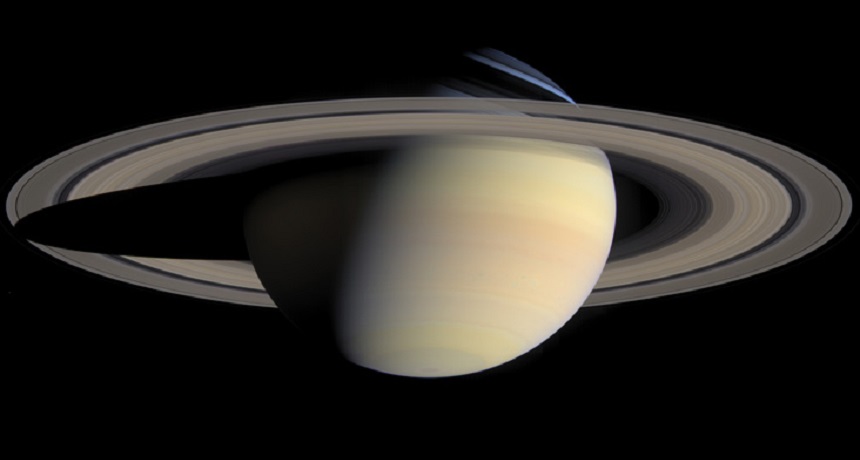
Saturn is one of the more visually striking of our solar system’s true planets. NASA’s Cassini spacecraft snapped a series of pictures of this, the sixth planet, on October 6, 2004. Those images were manipulated to create this complete shot of the planet and its rings.
NASA/JPL/Space Science Institute
Share this:
- Google Classroom
By Jennifer Cutraro
October 8, 2008 at 7:28 pm
The ancient Greeks first coined the name “planet.” The term means “wandering star,” explains David Weintraub. He’s an astronomer at Vanderbilt University in Nashville, Tenn. Aristotle, a Greek philosopher who lived more than 2,000 years ago, identified seven “planets” in the sky. These are the objects that today we call the sun, moon, Mercury, Venus, Mars, Jupiter and Saturn. This view of planets would hold for the next 1,500 years, Weintraub notes.
“The seven planets according to the Greeks were the seven planets at the time of the Copernicus,” he says. “And those seven included the sun and the moon.”
Nicolaus Copernicus was a Polish astronomer. In the early 1500s, he suggested that the sun, and not the Earth, was at the center of what we today call the solar system. By doing that, he removed the sun from the list of planets. Then, in 1610, Galileo Galilei pointed a telescope at the sky. In doing so, this Italian mathematician saw not only Jupiter but also four of its moons.
Later in that century, astronomers Christiann Huygens and Jean-Dominique Cassini spotted five additional objects orbiting Saturn. We now know them as moons. But at the end of the 1600s, astronomers agreed to call them planets. That brought the total number of apparent planets to 16.
Between then and the early 1900s, the number of planets fluctuated. From that high of 16, it later fell to six. That’s when the objects circling planets were reclassified as moons. With the 1781 discovery of Uranus, the planet count bumped up to seven. Neptune was discovered in 1846. Later, it jumped to 13 as telescopes unveiled several objects orbiting the sun from a distance between Mars and Jupiter. Today we call these objects asteroids . And now we know even asteroids can have moons . Finally, in 1930 little Pluto was spotted orbiting the sun from a cold, distant outpost.
Clearly, scientists have been naming, re-naming and categorizing parts of the solar system ever since people began following the paths of objects in the night sky, thousands of years ago. In 2006, the International Astronomical Union defined Pluto in a way that kicked it out of the planet tribe.
But wait…the definition of planet may not be settled.
“The word has changed meanings many times, for many different reasons,” noted Lisa Grossman in a 2021 Science News review of the science . “So there’s no reason,” she says, “why it couldn’t be changed once more.” Indeed, she cited scientists who are now arguing that Pluto should be given back its planet status. And some scientists suspect yet another planet may be orbiting the sun well beyond Pluto .
Nor are planets found only in our solar system. Astronomers have been logging stars throughout our galaxy that also appear to host their own planets. To differentiate these from planets in our solar system, those around other stars are now referred to as exoplanets . As of March 2022, the count of known exoplanets had already topped 5,000 .
Note : This story has been periodically updated to account for emerging developments in planetary science and discovery.
Aristotle : An ancient Greek philosopher who lived during the 300s B.C. He studied many scientific topics, including biology, chemistry, physics and zoology. But science was far from his only interest. He also probed ethics, logic, government and politics — the underpinnings of what would become European culture.
asteroid : A rocky object in orbit around the sun. Most asteroids orbit in a region that falls between the orbits of Mars and Jupiter. Astronomers refer to this region as the asteroid belt.
astronomer : A scientist who works in the field of research that deals with celestial objects, space and the physical universe.
exoplanet : Short for extrasolar planet, it’s a planet that orbits a star outside our solar system.
galaxy : A group of stars — and usually invisible, mysterious dark matter — all held together by gravity. Giant galaxies, such as the Milky Way, often have more than 100 billion stars. The dimmest galaxies may have just a few thousand. Some galaxies also have gas and dust from which they make new stars.
host : (in biology and medicine) The organism (or environment) in which some other thing resides. Humans may be a temporary host for food-poisoning germs or other infective agents. (v.) The act of providing a home or environment for something.
Jupiter : (in astronomy) The solar system’s largest planet, it has the shortest day length (9 hours, 55 minutes). A gas giant, its low density indicates that this planet is composed mostly of the light elements hydrogen and helium. This planet also releases more heat than it receives from the sun as gravity compresses its mass (and slowly shrinks the planet).
Mars : The fourth planet from the sun, just one planet out from Earth. Like Earth, it has seasons and moisture. But its diameter is only about half as big as Earth’s.
mercury : Sometimes called quicksilver, mercury is an element with the atomic number 80. At room temperature, this silvery metal is a liquid. Mercury is also very toxic. Sometimes called quicksilver, mercury is an element with the atomic number 80. At room temperature, this silvery metal is a liquid. Mercury is also very toxic. (in astronomy and here the term is capitalized) The smallest in our solar system and the one whose orbit is closest to our sun. Named after a Roman god (Mercurius), one year on this planet lasts 88 Earth days, which is shorter than one of its own days: Each of those lasts 175.97 times as long as a day on Earth. (in meteorology) A term sometimes used to refer to the temperature. It comes from the fact that old thermometers used to use how high mercury rose within a tube as a gauge for temperature.
moon : The natural satellite of any planet.
philosopher : Researchers (often in university settings) who ponder fundamental truths about relationships between things, including people and the world. The term also is used to describe truth seekers in the ancient world, ones who sought to find meaning and logic out of observing the workings of society and of the natural world, including the universe.
planet : A large celestial object that orbits a star but unlike a star does not generate any visible light.
Pluto : A distant world that is located in the Kuiper Belt, just beyond Neptune. Known as a dwarf planet, Pluto is the ninth largest object orbiting our sun.
Saturn : The sixth planet out from the sun in our solar system. One of the two gas giants, this planet takes 10.6 hours to rotate (completing a day) and 29.5 Earth years to complete one orbit of the sun. It has at least 82 moons. But what most distinguishes this planet is the broad and flat plane of bright rings that orbit it.
solar system : The eight major planets and their moons in orbit around our sun, together with smaller bodies in the form of dwarf planets, asteroids, meteoroids and comets.
star : The basic building block from which galaxies are made. Stars develop when gravity compacts clouds of gas. When they become hot enough, stars will emit light and sometimes other forms of electromagnetic radiation. The sun is our closest star.
sun : The star at the center of Earth’s solar system. It is about 27,000 light-years from the center of the Milky Way galaxy. Also a term for any sunlike star.
telescope : Usually a light-collecting instrument that makes distant objects appear nearer through the use of lenses or a combination of curved mirrors and lenses. Some, however, collect radio emissions (energy from a different portion of the electromagnetic spectrum) through a network of antennas.
Venus : The second planet out from the sun, it has a rocky core, just as Earth does. Venus lost most of its water long ago. The sun’s ultraviolet radiation broke apart those water molecules, allowing their hydrogen atoms to escape into space. Volcanoes on the planet’s surface spewed high levels of carbon dioxide, which built up in the planet’s atmosphere. Today the air pressure at the planet’s surface is 100 times greater than on Earth, and the atmosphere now keeps the surface of Venus a brutal 460° Celsius (860° Fahrenheit).
More Stories from Science News Explores on Planets

Let’s learn about meteorites

Huge polygons on Mars hint its equator may once have been frozen

Jupiter has a never-before-seen jet stream — and it’s speedy

Analyze This: Neptune’s cloud cover syncs up with the solar cycle

In a first, astronomers spot the aftermath of an exoplanet smashup

Four researchers on Earth are spending a year on ‘Mars’

Lightning dances through Jupiter’s skies much like it does on Earth

In a first, telescopes have caught a star eating a planet
What are Planets?
A planet (from Ancient Greek ἀστὴρ πλανήτης (astēr planētēs), meaning “wandering star”) is an astronomical object orbiting a star or stellar remnant that is massive enough to be rounded by its own gravity, is not massive enough to cause thermonuclear fusion, and has cleared its neighbouring region of planetesimals.
The term planet is ancient, with ties to history, science, mythology, and religion. The planets were originally seen by many early cultures as divine, or as emissaries of deities. As scientific knowledge advanced, human perception of the planets changed, incorporating a number of disparate objects. In 2006, the International Astronomical Union (IAU) officially adopted a resolution defining planets within the Solar System. This definition has been both praised and criticized and remains disputed by some scientists because it excludes many objects of planetary mass based on where or what they orbit. While eight of the planetary bodies discovered before 1950 remain “planets” under the modern definition, some celestial bodies, such as Ceres, Pallas, Juno, Vesta (each an object in the Solar asteroid belt), and Pluto (the first-discovered trans-Neptunian object), that were once considered planets by the scientific community are no longer viewed as such.
The planets were thought by Ptolemy to orbit the Earth in deferent and epicycle motions. Although the idea that the planets orbited the Sun had been suggested many times, it was not until the 17th century that this view was supported by evidence from the first telescopic astronomical observations, performed by Galileo Galilei. By careful analysis of the observation data, Johannes Kepler found the planets’ orbits were not circular but elliptical. As observational tools improved, astronomers saw that, like Earth, the planets rotated around tilted axes, and some shared such features as ice caps and seasons. Since the dawn of the Space Age, close observation by probes has found that Earth and the other planets share characteristics such as volcanism, hurricanes, tectonics, and even hydrology.
Planets are generally divided into two main types: large, low-density gas giants and smaller, rocky terrestrials. Under IAU definitions, there are eight planets in the Solar System. In order of increasing distance from the Sun, they are the four terrestrials, Mercury, Venus, Earth, and Mars, then the four gas giants, Jupiter, Saturn, Uranus, and Neptune. Six of the planets are orbited by one or more natural satellites.
Additionally, the IAU accepts five dwarf planets, with many others under consideration, and hundreds of thousands of small Solar System bodies. Since 1992, hundreds of planets around other stars (“extrasolar planets” or “exoplanets”) in the Milky Way have been discovered. As of 6 July 2013, 908 known extrasolar planets (in 700 planetary systems and 140 multiple planetary systems) are listed in the Extrasolar Planets Encyclopaedia, ranging in size from that of terrestrial planets similar to Earth to that of gas giants larger than Jupiter. On December 20, 2011, the Kepler Space Telescope team reported the discovery of the first Earth-sized extrasolar planets, Kepler-20e and Kepler-20f, orbiting a Sun-like star, Kepler-20. A 2012 study, analyzing gravitational microlensing data, estimates an average of at least 1.6 bound planets for every star in the Milky Way. Astronomers at the Harvard-Smithsonian Center for Astrophysics (CfA) reported in January 2013 that “at least 17 billion” Earth-sized (i.e. 0.8–1.25 Earth masses) exoplanets with orbital periods of 85 days or less are estimated to reside in the Milky Way Galaxy.
wandering star
- 1.1 Etymology
- 1.2.1 Synonyms
English [ edit ]
Etymology [ edit ].
Calque of Ancient Greek ἀστὴρ πλανήτης ( astḕr planḗtēs ) as distinguished from the fixed stars .
Noun [ edit ]
wandering star ( plural wandering stars )
- 1877 , Ormsby MacKnight Mitchel, The planetary and stellar worlds : Might it not be possible, that this wandering star would pass by the sun and reappear in the east?
- 1988 , Alan Richardson, A Mental Theater : [...] Or warring with the spirits who may dare Dispute with him Who made all empire, empire; or recalling Some wandering star , which shoots through the abyss Whose tenants dying, while their world is falling Share the dim destiny of clay in this.
- [ 2000 , Linda Goodman, Linda Goodman's Star Signs : The word planet is an old Greek word meaning " wandering star " (planets wander, Fixed Stars do not) — so either term is correct, although modern popular usage is planet. I like star. Especially " wandering star ." ]
- 2005 , Constance Stellas, Advanced Astrology for Life : In ancient times, a fixed star was so named to distinguish it from a wandering star or planet.
- 2009 , Gardner Dozois, The Year's Best Science Fiction : Now he turned his flight, a prayer short of light-speed, towards the wandering star . Jedden had long ago abolished fear. Yet he experienced a strange psychosomatic sensation in that part of the splinter ship that corresponded to his testicles.
Synonyms [ edit ]
- English terms calqued from Ancient Greek
- English terms derived from Ancient Greek
- English lemmas
- English nouns
- English countable nouns
- English multiword terms
- English terms with quotations
- Quotation templates to be cleaned
Navigation menu
- International edition
- Australia edition
- Europe edition
Wandering star brings planet from another galaxy into the Milky Way
These days, the discovery of yet another planet orbiting yet another distant star in our galaxy doesn't seem out of the ordinary. Unless, of course, the planet and star came from a galaxy far, far away.
HIP13044b is the first planet ever detected in the Milky Way that was born outside our galaxy.
Thanks to improvements in telescope technology , astronomers have found evidence for almost 500 extrasolar planets in the past 15 years, heavenly bodies of different sizes orbiting distant stars. But all of those confirmed by scientists have originated within the Milky Way.
The newly discovered planet has a mass at least 1.25 times that of Jupiter and orbits a star called HIP13044, a giant near the end of its life that is part of the "Helmi stream". This is a group of stars that once belonged to a dwarf galaxy before it was cannibalised by the Milky Way between six and nine billion years ago.
"This discovery is very exciting," said Rainer Klement of the Max Planck Institute for Astronomy (MPIA) and author of a paper published today in Science Express . "For the first time, astronomers have detected a planetary system in a stellar stream of extragalactic origin. Because of the great distances involved, there are no confirmed detections of planets in other galaxies. But this cosmic merger has brought an extragalactic planet within our reach."
HIP13044 is around 2,000 light years from Earth and appears in the southern constellation Fornax . Astronomers detected the planet by looking out for the small, gravitationally induced movements of its star as the planet orbits. The researchers measured the wobbles using a spectrograph connected to a 2.2-metre telescope at the European Southern Observatory's La Silla Observatory in Chile .
"This discovery is part of a study where we are systematically searching for exoplanets that orbit stars nearing the end of their lives," says Johny Setiawan , also from MPIA and a co-author of the Science paper. "This discovery is particularly intriguing when we consider the distant future of our own planetary system, as the Sun is also expected to become a red giant in about five billion years."
HIP13044b is relatively close to its star, say the scientists, at its closest approach reaching less than 0.055 times the distance between the Earth and the Sun, and taking just over 16 days to complete an orbit. The star itself has already passed the red giant phase, where it would have expanded to several times its original diameter as it ran out of hydrogen fuel – a fate that will befall our own Sun in a few billion years.
"The star is rotating relatively quickly," said Setiawan. "One explanation is that HIP13044 swallowed its inner planets during the red giant phase, which would make the star spin more quickly."
He added that there are unanswered questions about how the planet, which orbits a star containing very few chemical elements other than hydrogen and helium, was formed when there was seemingly such a small range of material available. Until now, very few planets have been discovered orbiting stars such as this.
"It is a puzzle for the widely accepted model of planet formation to explain how such a star, which contains hardly any heavy elements at all, could have formed a planet," said Setiawan. "Planets around stars like this must probably form in a different way."

Oxygen found on Saturn's moon Rhea
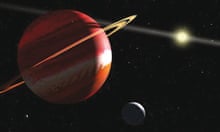
Is there life out there?
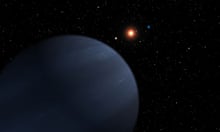
Our galaxy may contain billions of planets with the same mass as Earth
Alien planets: otherwordly joys.

New Earth-like planet discovered
New solar system looks much like home.

Asteroid coated with ice suggests ingredients for life came from space
Comments (…), most viewed.
The Storied History of the Word 'Planet'

The word"planet" has meant many different things over the millennia and evenstill its definition is evolving.
The word istypically traced back to the ancient Greeks, who believed the Earth wasstationary at the center of the universe while objects in the sky revolvedaround it. The Greek term asters planetai mean "wanderingstars" and described the tiny lights that moved across the sky moredramatically than stars when compared over weeks and months. These wanderingstars, back then, amounted to Mercury, Venus, Mars, Jupiter and Saturn.
Some thinkthe Greeks and Romans of ancient times considered the sun and Earth's moon asplanets. An Elizabethan-era stage play and comedy published in 1597, called"The Woman in the Moon," depicted thesolar system with seven planets, including Saturn, Jupiter, Mars, Mercury,Venus, Sol (the sun) and Luna (the moon).??
NicolausCopernicus, in 1543, published his mathematical evidence of a heliocentricuniverse where the six planets revolved around the sun.
Only sixplanets, including Earth, were known until the 18th Century. In 1781, SirWilliam Herschel discovered Uranus in that he determined the point of light wasa planet and not another star as it had been considered until then.
Newhorizons
As planetaryscientists and astronomers probe the solar system and beyond, with loads of newdiscoveries, this idea of a planet has changed and along with it celestialbodies either get thrown onto or off the planet list.
Get the Space.com Newsletter
Breaking space news, the latest updates on rocket launches, skywatching events and more!
For instance,when Plutowas discovered by Clyde Tombaugh, the icy world seemed to be the king ofits neighborhood with no other similar-sized objects in sight. That all changedin 1992 when the first Kuiper Belt Object was found, with currently more than1,000 such icy bodies spotted in a disk-shaped region beyond the orbit ofNeptune, including some around the same size as Pluto. The discovery bringscontext to Pluto, leading some astronomers to contend Pluto looked more like aKuiper Belt Object than a planet.
In 2006, theInternational Astronomical Union (IAU) issued a formal definition of planet,one that led to Pluto's boot from planethood.
The IAUprovided three criteria an object must meet to reachplanet status :
A planet is acelestial body that
1. It orbitsaround the sun.
2. It has?sufficient mass for its self-gravity to overcome rigid body forces so that itassumes a hydrostatic equilibrium (nearly round) shape, and
3. It hascleared the neighborhood around its orbit.
Severalproblems with this definition immediately pop up for astronomers.
Under the IAUcriteria, the more than 300 extrasolar planets identified to date would not beconsidered planets.
"Thereis no acceptable planet definition for exoplanets," said Sara Seager, anastrophysicist at MIT. The current IAU planet definition necessitates a planetmust orbit the sun. Well, an exoplanet, has its own host star and it's not thesun.
Seager joinedother astronomers and planetary scientists last week at the Johns HopkinsUniversity Applied Physics Laboratory (APL) in Laurel, Md., for "The GreatPlanet Debate: Science as Process" conference. The argued about Pluto'sstatus and also discussed worlds beyond our solar system.
The problems,it turns out, are small and big.
Severalobjects not currently called exoplanetssit along the upper-limit mass cutoff of 13 Jupiter masses, beyond whichobjects are typically thought to be a class of failed star called brown dwarf. Butthese borderline objects could go either way, and Seager said a definition mustaccount for them.
The"cleared the neighborhood around its orbit" criterion is also asticky issue. That's because the farther away a planetary object is from itsstar the longer it takes to complete its orbit. So depending on the age of thesystem, that object may not have completed many orbits and thus If Earth werepositioned at a distance of 100 astronomical units (100 times farther than itis now) , ?our homebase would not fit the IAU definition of a planet, argueHal Levison of the Southwest Research Institute in Boulder, Colo., and others.
Planetdefinition still evolving
The differentplanet definitions put forth at last week's meeting could leave the solarsystem with as few as eight planets or as manyas 13 , with the possibility of many more lurking out there yet to bediscovered.
Two flavorsof definitions include the so-called dynamical definition and the geophysicalone. For the dynamical one, a planet is a planet if it has cleared out itsorbit of rocky litter either by eating up that material, and becoming fatter inthe process, or kicking the junk into other orbits. But that's just asimplistic view. What about Jupiter, which has a slew of captured asteroidsthat orbit the sun in lockstep with the giant planet?
Thegeophysical definition would include as planets objects massive enough for gravityto make them about spherical but not so massive that internal nuclear fusionexists, as is the case with stars.
"You gothrough and look at how the definition [of planet] has evolved over time andthey all have one thing in common. The basic characteristic of a planet is theygo around the sun, historically," Levison said. "This is a dynamicaldefinition. So to say you can't use dynamics, that somehow it's wrong to usedynamics, in order to characterize a planet is historically inaccurate. That'sthe way we've always defined planets."
Mark Sykes,directory of the Planetary Science Institute in Tucson, Ariz., supports ageophysical definition of round objects that orbit a star. The key here is thatonce an object gets that big, important geophysical processes begin. Such anobject is large and round enough that heat can build up in its core to triggergeophysical processes ? akin to volcanicactivity and tectonic movement on Earth ? and a process known asdifferentiation in which the less dense material sinks to the center and thevolatiles float toward the surface.
It's alsoroughly the mass at which atmospheres can form, as gases are gravitationallytrapped around the object's surface. Internal or surface oceans also becomepossible, as the volatiles condense toward the object's surface.
Pandora'sbox?
Thegeophysical definition leaves open the planet window for some satellites,including Jupiter'smajor moons: Io, Europa, Ganymede and Callisto. While Io is the mostvolcanically active body in the solar system, Callisto is the solar system'sthird largest satellite and Europa likely has an iron core, mantle and surfaceocean similar to Earth's structure.
"Theseare massive worlds," said William McKinnon of Washington University inSaint Louis. "They are planets in all but name. They just happen to begoing around Jupiter."
But does itmatter what an object is called, at the end of the day?
"There'san implicit hierarchy. If you're a planet, you are first-class, A-list, you getinside the rope to the club and, otherwise you're nothing," McKinnon said."There's got to be some way to communicate that these are worlds in theirown right, as worthy of study as Mars."
- Top 10 Mad Scientists
- Image Gallery: Our New Solar System
- Image of the Day: Mystery of van Gogh's Moonrise Solved
Join our Space Forums to keep talking space on the latest missions, night sky and more! And if you have a news tip, correction or comment, let us know at: [email protected].

Satellites watch as 4th global coral bleaching event unfolds (image)
Happy Earth Day 2024! NASA picks 6 new airborne missions to study our changing planet
Mars exploration, new rockets and more: Interview with ESA chief Josef Aschbacher
Most Popular
- 2 Everything we know about James Gunn's Superman
- 3 Sneak peek: Browncoats grab victory in Boom! Studios' upcoming 'Firefly: 'Verses' comic (exclusive)
- 4 SpaceX launches 23 Starlink satellites from Florida
- 5 NASA's mission to an ice-covered moon will contain a message between water worlds
share this!
August 16, 2018
Aboriginal traditions describe the complex motions of planets, the 'wandering stars' of the sky
by Duane W. Hamacher, The Conversation
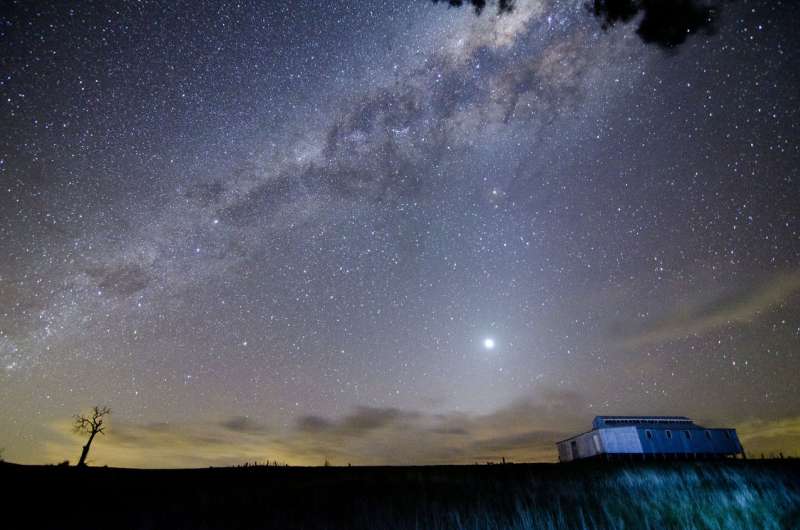
(Aboriginal and Torres Strait Islander readers are advised that this story may contain images and voices of people who have died.)
The five planets we can see by naked eye were known to the ancient Greeks as "asteres planetai", meaning "wandering stars ", due to their wandering journey across the sky relative to the fixed stars. This is where we get the word "planet".
But knowledge of the planets and their movements goes back much further, being prominent in the traditions of the oldest continuing cultures in the world.
Recent research reveals a wealth of information about the planets and their complex motions in the Knowledge Systems of Indigenous Australians.
The wandering stars
These systems show that Aboriginal and Torres Strait Islander people carefully observe the complex motions of the planets.
In Wardaman traditions, the planets are ancestor spirits who walk across a celestial road. Wardaman Elder Bill Yidumduma Harney calls it the Dreaming Track in the Sky .
Astronomers call this celestial road the zodiac – the region of sky nine degrees on either side of the ecliptic (the path of the Sun). As the planets orbit the Sun in roughly the same plane, they all are visible along this band of the sky.
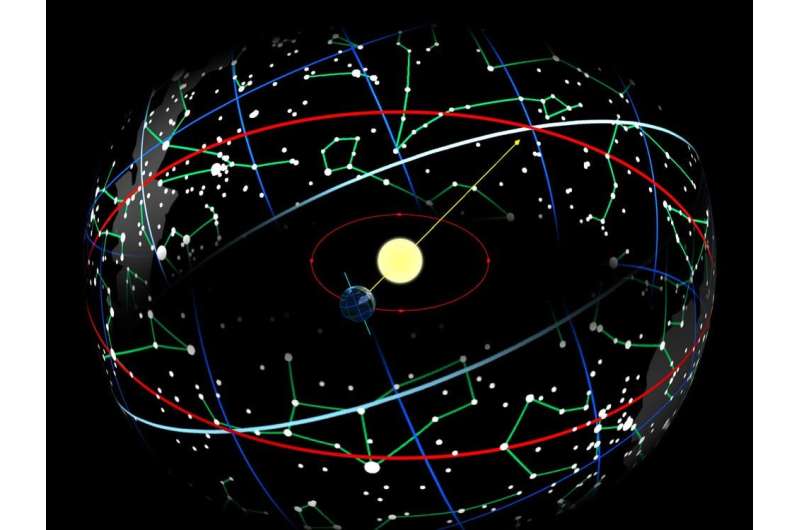
Uncle Yidumduma describes the planet-ancestors moving across the sky much like we walk down a busy footpath. We sometimes hurriedly pass each other, or slow down for a chat. Occasionally, we even stop and turn backwards to chat with someone before moving forward again.
Astronomers call this phenomenon retrograde motion. It is an optical effect that occurs as the planets orbit the Sun at different distances and velocities. It means the planets can appear to slow down and move backwards for a time before returning to their normal motion.
There are five planets visible to the naked eye and right now, and you can see at least four – Venus, Mars, Jupiter and Saturn – in the sky at sunset from most locations across Australia . All of these planets are currently in retrograde motion.
The (non) twinkling stars
Aboriginal and Torres Strait Islander people recognise that these wandering stars generally do not twinkle – a phenomenon the Meriam people of the eastern Torres Strait call epreki and observe to predict weather and seasonal change.
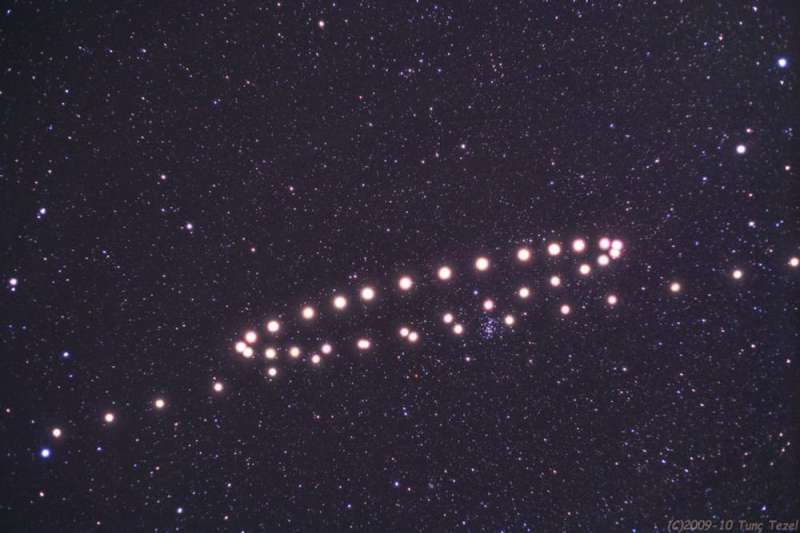
But sometimes they do twinkle, particularly if they are very low on the horizon. Kamilaroi people of northern New South Wales say Venus occasionally twinkles when it's low in the sky. They say it's an old man who told a rude joke and has been laughing ever since.
In the traditions of the Euahlayi people – neighbours of the Kamilaroi – Venus and Mars relate to songlines and trade with Arrernte people of the Central Desert.
During special ceremonies, the Arrernte travel from the MacDonnell Ranges to northern New South Wales, bringing with them a red stone that signifies Mars. The Euahlayi people bring a green and blue stone to the ceremony, representing Venus. They are seen as the different-coloured eyes of the creator spirit Baayami .
Venus—the Morning and Evening Star
Venus is commonly known in many Aboriginal and Torres Strait Islander cultures as both the Morning and Evening Star.
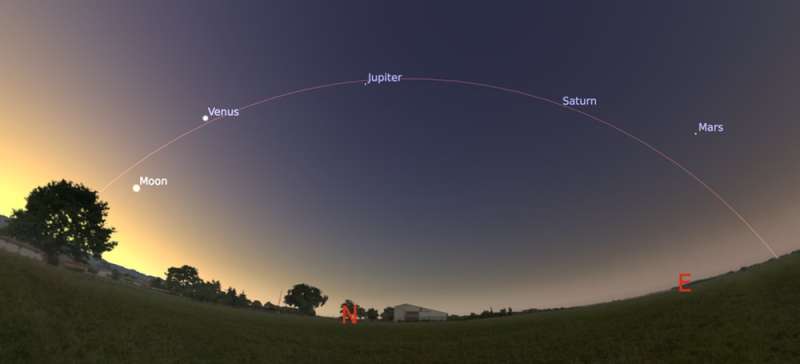
In the Dreaming stories of the Western Arrernte, a celestial baby fell from the Milky Way, striking the ground and creating the giant meteorite crater called Tnorala (Gosses Bluff). The child's parents – the Morning and Evening Stars – take turns searching for their lost child to this day.
Arrernte mothers warn their children not to look at the Morning or Evening Star, as the celestial parents might mistake them for their lost child and carry them away to the sky.
In Yolngu traditions of Arnhem Land, a special ceremony is held to signify the rising of the Creation ancestor, Banumbirr (Venus), between the mainland and a Burralku – the sacred island of the dead.
The ceremony starts at dusk and continues through the night, reaching a climax when Banumbirr rises a few hours before dawn as Venus transitions from the Evening Star to the Morning Star. Banumbirr communicates with the people through a faint rope that holds her close to the Sun.
Astronomers call this zodiacal light – the glow of dust in the plane of the Solar System.
The first rising of Venus as the Morning Star, after it transitions from the Evening Star, occurs every 584 days. Astronomers refer to this as Venus' synodic period .
When astronomer Ray Norris asked a Yolngu elder how the people know when to hold the Banumbirr ceremony, the elder responded: "We count the days!"
That's an achievement not often recognised, and just another example of the detailed understanding of these "wandering stars" in the Knowledge Systems of Indigenous Australians.
Kirsten Banks , a Wiradjuri woman and astrophysics graduate from the University of New South Wales, contributed to this research and this article. She can be contacted at [email protected]
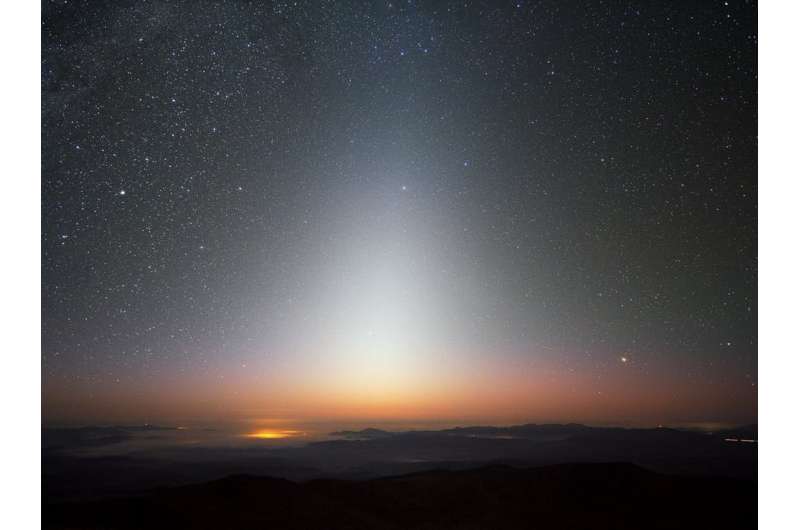
Provided by The Conversation
Explore further
Feedback to editors

Probing the effects of interplanetary space on asteroid Ryugu
58 minutes ago

T. rex not as smart as previously claimed, scientists find

Human activities have an intense impact on Earth's deep subsurface fluid flow
17 hours ago

DNA study of Avar cemetery remains reveals network of large pedigrees and social practices
20 hours ago

Global study shows a third more insects come out after dark
Apr 27, 2024

Cicada-palooza! Billions of bugs to blanket America


Getting dynamic information from static snapshots

Ancient Maya blessed their ballcourts: Researchers find evidence of ceremonial offerings in Mexico

Optical barcodes expand range of high-resolution sensor
Apr 26, 2024

Ridesourcing platforms thrive on socio-economic inequality, say researchers
Relevant physicsforums posts, documenting the setup of my new telescope.
7 hours ago
Quasi-Moons
Need help simplifying standard error formula for redshift, our beautiful universe - photos and videos.
Apr 25, 2024
Solar Activity and Space Weather Update thread
'devil' comet visible tonight 21.04.24.
More from Astronomy and Astrophysics
Related Stories

Jupiter, Venus and Mars stand proud in the morning sky
Oct 14, 2015

Dance of the planets in the evening sky
Feb 19, 2015

Your guide to see five planets after sunset
Jul 21, 2016

Astronomy in Indigenous knowledge
Dec 1, 2014
Mystery of the Star of Bethlehem unlikely to be resolved
Dec 19, 2017

All five bright planets come together in the morning sky
Jan 15, 2016
Recommended for you

Research investigates radio emission of the rotating radio transient RRAT J1854+0306

Researchers advance detection of gravitational waves to study collisions of neutron stars and black holes

Recently discovered black hole is part of a nearby disrupted star cluster, study finds

Black hole 'traffic jams' discovered in galactic centers by astronomers
Apr 24, 2024

International team detects eruption of mega-magnetic star in nearby galaxy

New evidence found for Planet 9
Apr 23, 2024
Let us know if there is a problem with our content
Use this form if you have come across a typo, inaccuracy or would like to send an edit request for the content on this page. For general inquiries, please use our contact form . For general feedback, use the public comments section below (please adhere to guidelines ).
Please select the most appropriate category to facilitate processing of your request
Thank you for taking time to provide your feedback to the editors.
Your feedback is important to us. However, we do not guarantee individual replies due to the high volume of messages.
E-mail the story
Your email address is used only to let the recipient know who sent the email. Neither your address nor the recipient's address will be used for any other purpose. The information you enter will appear in your e-mail message and is not retained by Phys.org in any form.
Newsletter sign up
Get weekly and/or daily updates delivered to your inbox. You can unsubscribe at any time and we'll never share your details to third parties.
More information Privacy policy
Donate and enjoy an ad-free experience
We keep our content available to everyone. Consider supporting Science X's mission by getting a premium account.
E-mail newsletter

SITE SETTINGS

WHAT IS A WANDERING STAR?
Wandering stars, also called ‘intergalactic stars’, ‘intracluster stars’ or ‘rogue stars’, are stars that are not gravitationally tied to a par ticular galaxy – they exist between galaxies. These stars, first discovered in 1997, probably formed inside galaxies, but were later expelled, perhaps during galaxy mergers or by a close encounter with a supermassive black hole. Astronomers estimate that rogue stars comprise between 15–50 per cent of all stars in galaxy clusters. The Virgo galaxy cluster, for example, contains perhaps 1 trillion rogue stars! Closer to home, at least 675 rogue stars have been found between the Milk y Way and the Andromeda Galaxy. AG

This article is from...

Other Articles in this Issue
Basket - 0 items.

- More from M-W
- To save this word, you'll need to log in. Log In
Definition of wandering
(Entry 1 of 2)
Definition of wandering (Entry 2 of 2)
- digressional
- digressionary
Examples of wandering in a Sentence
These examples are programmatically compiled from various online sources to illustrate current usage of the word 'wandering.' Any opinions expressed in the examples do not represent those of Merriam-Webster or its editors. Send us feedback about these examples.
Word History
before the 12th century, in the meaning defined above
14th century, in the meaning defined at sense 1
Phrases Containing wandering
wandering albatross
- wandering dude
- wandering eye
- wandering Jew
Dictionary Entries Near wandering
Cite this entry.
“Wandering.” Merriam-Webster.com Dictionary , Merriam-Webster, https://www.merriam-webster.com/dictionary/wandering. Accessed 29 Apr. 2024.
Medical Definition
Medical definition of wandering.
Medical Definition of wandering (Entry 2 of 2)
More from Merriam-Webster on wandering
Nglish: Translation of wandering for Spanish Speakers
Britannica English: Translation of wandering for Arabic Speakers
Subscribe to America's largest dictionary and get thousands more definitions and advanced search—ad free!

Can you solve 4 words at once?
Word of the day.
See Definitions and Examples »
Get Word of the Day daily email!
Popular in Grammar & Usage
More commonly misspelled words, commonly misspelled words, how to use em dashes (—), en dashes (–) , and hyphens (-), absent letters that are heard anyway, how to use accents and diacritical marks, popular in wordplay, the words of the week - apr. 26, 9 superb owl words, 'gaslighting,' 'woke,' 'democracy,' and other top lookups, fan favorites: your most liked words of the day 2023, 10 words for lesser-known games and sports, games & quizzes.

- Daily Crossword
- Word Puzzle
- Word Finder
- Word of the Day
- Synonym of the Day
- Word of the Year
- Language stories
- All featured
- Gender and sexuality
- All pop culture
- Grammar Coach ™
- Writing hub
- Grammar essentials
- Commonly confused
- All writing tips
- Pop culture
- Writing tips
Advertisement
[ won -der-ing ]
Crowds of wandering tourists crossed the square.
They were historically a wandering people, moving seasonally through the area.
They followed a wandering path down the mountain.
For our honeymoon we had a period of delightful wandering through Italy.
Her wanderings took her all over the world.
mental wanderings;
the wanderings of delirium.
Wandering by Alzheimer’s patients is a problem in nursing homes.
Discover More
Other words from.
- wan·der·ing·ly adverb
- wan·der·ing·ness noun
- un·wan·der·ing adjective
- un·wan·der·ing·ly adverb
Word History and Origins
Origin of wandering 1
Example Sentences
Later, information emerged that this sea lion is known for its wanderings.
This is counter-intuitive because spontaneous fluctuations and mind-wandering can also lead to depressive rumination and anxiety.
Similar to playing and dreaming is the wandering of our minds.
When psychologists do that, they find that mind-wandering is staggeringly frequent.
Mind-wandering is often considered a harmless quirk, as in the cliché of the scatter-brained professor.
Mr. Bachner found it by wandering through the market and identified a craftsmen here who works in a tiny booth.
And, in a gratuitous show of homicidal prowess, Moses kills two assassins he meets while wandering in the desert of Sinai.
After wandering at haphazard some little way I met a peasant in a sleigh.
He showed signs of a restless, wandering soul, someone searching for meaning around him.
I spotted American students wandering around London last week dressed in Stars and Stripes shorts and bikini tops.
She observed his pale looks, and the distracted wandering of his eyes; but she would not notice either.
This mode of learning promotes attention and prevents mind-wandering.
He paled a little, and sucked his lip, his eyes wandering to the girl, who stood in stolid inapprehension of what was being said.
John and Judas became the good and evil Wandering Jews of mediæval folklore.
He was relieved to learn that his grandson Moses Mole was not wandering about the garden, after all.
Related Words

All Mars Resources

Perseverance’s ‘Bunsen Peak’ Sample
NASA’s Perseverance Mars rover captured this image of a sample cored from a rock called “Bunsen Peak” on March 11,…

NASA’s Curiosity Rover Reaches Gediz Vallis Channel (360 View)
360-degree panorama provided by NASA’s Curiosity Mars rover. This view was captured at Gediz Vallis channel, a feature that formed…
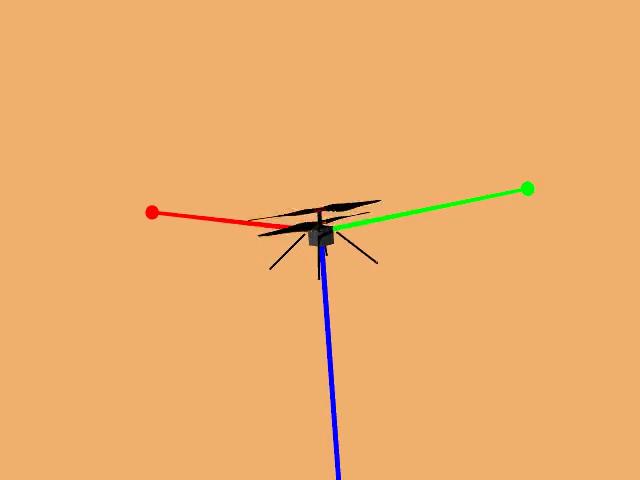
Animation of Mars Helicopter Flight Test
This animation shows a simulation of the response of NASA’s Ingenuity Mars Helicopter to the system identification, or “Sys-ID,” process.…

Rover, Helicopter Locations in Jezero Crater
This map shows the locations of NASA’ Perseverance rover (white star) and Ingenuity Mars Helicopter (cyan star) on Dec. 19,…

Sol 4132: Right Navigation Camera, Cylindrical Projection
NASA’s Mars rover Curiosity took 31 images in Gale Crater using its mast-mounted Right Navigation Camera (Navcam) to create this…

Sol 4130: Right Navigation Camera, Cylindrical Projection
NASA's Mars rover Curiosity took 31 images in Gale Crater using its mast-mounted Right Navigation Camera (Navcam) to create this…

Sol 4128: Right Navigation Camera, Cylindrical Perspective
NASA's Mars rover Curiosity took 30 images in Gale Crater using its mast-mounted Right Navigation Camera (Navcam) to create this…
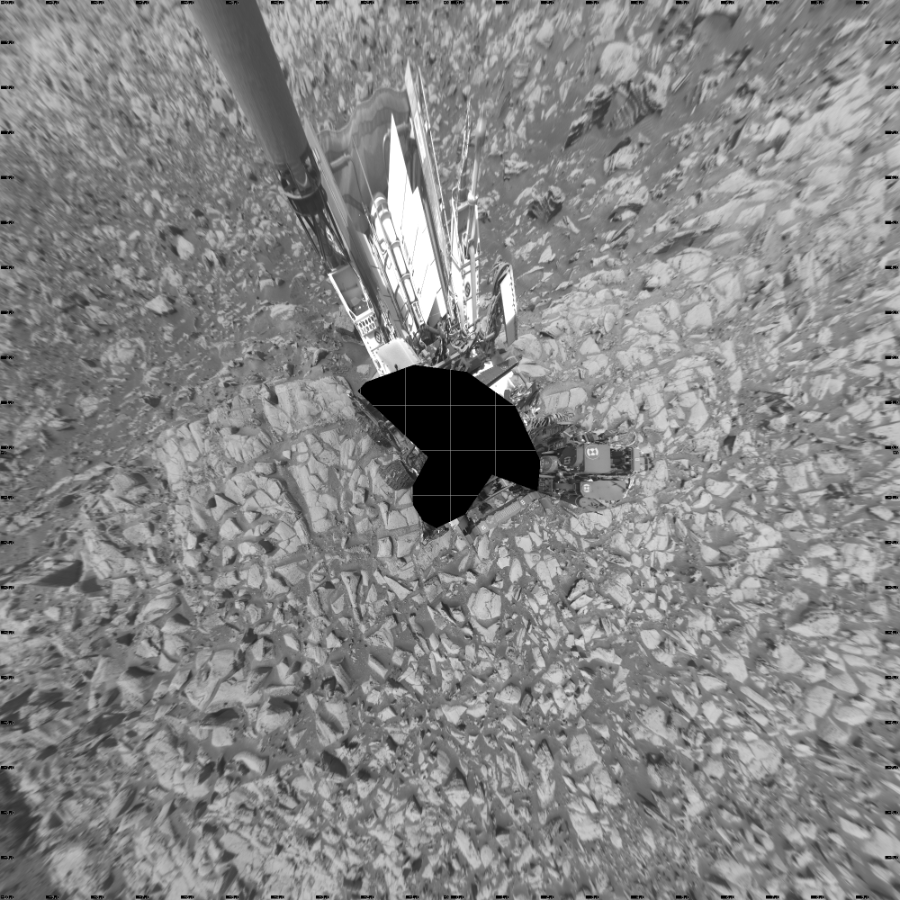
Sol 4128: Left Navigation Camera, Vertical Projection
NASA's Mars rover Curiosity took 30 images in Gale Crater using its mast-mounted Left Navigation Camera (Navcam) to create this…

Sol 4128: Left Navigation Camera, Cylindrical Perspective

Sol 4128: Left Navigation Camera, Cylindrical Projection
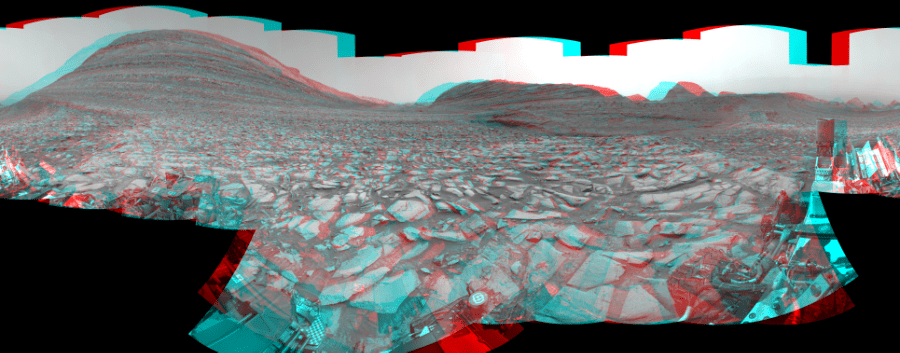
Sol 4128: Mast-Mounted Navigation Camera, Cylindrical Perspective
NASA's Mars rover Curiosity took 30 image pairs in Gale Crater using its mast-mounted Navigation Camera (Navcam) to create this…

Sol 4128: Right Navigation Camera, Cylindrical Projection

Sol 4125: Right Navigation Camera, Cylindrical Projection
NASA's Mars rover Curiosity took 52 images in Gale Crater using its mast-mounted Right Navigation Camera (Navcam) to create this…

Sol 4123: Right Navigation Camera, Cylindrical Projection
NASA's Mars rover Curiosity took 51 images in Gale Crater using its mast-mounted Right Navigation Camera (Navcam) to create this…

Sol 4118: Right Navigation Camera, Cylindrical Projection
NASA's Mars rover Curiosity took 49 images in Gale Crater using its mast-mounted Right Navigation Camera (Navcam) to create this…

IMAGES
VIDEO
COMMENTS
wandering star: [noun] any of the seven planets of ancient astronomy.
A planet derives from the ancient Greek term "wandering star"."a wandering star". The reason for this terminology is that the "actual" stars remain fixed in their positions, while the planets traverse the sky. ... the initial choice remains more suitable in accordance with our definition. This is particularly true since a sub-brown ...
WHAT IS A WANDERING STAR? DIANE BERRY, VIA EMAIL . Wandering stars, also called 'intergalactic stars', 'intracluster stars' or 'rogue stars', are stars that are not gravitationally tied to a par ticular galaxy - they exist between galaxies. These stars, first discovered in 1997, probably formed inside galaxies, but were later ...
A wandering star passed within one light-year of the Sun roughly 70,000 years ago. At the time, modern humans were just beginning to migrate out of Africa, and Neanderthals were still sharing the ...
A classical planet is an astronomical object that is visible to the naked eye and moves across the sky and its backdrop of fixed stars (the common stars which seem still in contrast to the planets). Visible to humans on Earth there are seven classical planets (the seven luminaries).They are from brightest to dimmest: the Sun, the Moon, Venus, Jupiter, Mars, Mercury and Saturn.
The definition of the term planet has changed several times since the word was coined by the ancient Greeks. Greek astronomers employed the term ἀστέρες πλανῆται (asteres planetai), 'wandering stars', for star-like objects which apparently moved over the sky.Over the millennia, the term has included a variety of different celestial bodies, from the Sun and the Moon to ...
The term means "wandering star," explains David Weintraub. He's an astronomer at Vanderbilt University in Nashville, Tenn. Aristotle, a Greek philosopher who lived more than 2,000 years ago, identified seven "planets" in the sky. These are the objects that today we call the sun, moon, Mercury, Venus, Mars, Jupiter and Saturn.
"Wandering stars" is a term usually applied to the planets. When ancient stargazers created the original constellations thousands of years ago, they called the stars that formed those ...
What are Planets? A planet (from Ancient Greek ἀστὴρ πλανήτης (astēr planētēs), meaning "wandering star") is an astronomical object orbiting a star or stellar remnant that is massive enough to be rounded by its own gravity, is not massive enough to cause thermonuclear fusion, and has cleared its neighbouring region of ...
Especially "wandering star." ] 2005, Constance Stellas, Advanced Astrology for Life: In ancient times, a fixed star was so named to distinguish it from a wandering star or planet. 2009, Gardner Dozois, The Year's Best Science Fiction: Now he turned his flight, a prayer short of light-speed, towards the wandering star. Jedden had long ago ...
HIP13044b is relatively close to its star, say the scientists, at its closest approach reaching less than 0.055 times the distance between the Earth and the Sun, and taking just over 16 days to ...
The word"planet" has meant many different things over the millennia and evenstill its definition is evolving. The word istypically traced back to the ancient Greeks, who believed the Earth ...
From wandering star to Earth-orbiter, the word 'planet' has changed its meaning many times. Pluto's exile is only the most recent. ... He prefers the geophysical planet definition, in which any object with enough mass to become round (the hydrostatic equilibrium criterion), but not enough to cause nuclear fusion (which would make it a ...
The five planets we can see by naked eye were known to the ancient Greeks as "asteres planetai", meaning "wandering stars ", due to their wandering journey across the sky relative to the fixed ...
Wandering star is a loan translation of the Greek asteres planetai from which we get the word planet . I'm not sure when was the earliest use of wandering star, but it appears as early as 1683 in a book titled "A Discourse concerning Comets." "And the Holy Scripture seems to give that name of planets to them, or as our translation hath it ...
This video shows an artist's impression of the free-floating planet CFBDSIR J214947.2-040308.9.. A rogue (alternately interstellar, nomad, orphan, starless, unbound, or wandering) planet, also termed a free-floating planet (FFP) or an isolated planetary-mass object (iPMO), is an interstellar object of planetary mass which is not gravitationally bound to any star or brown dwarf.
Wanderstar definition: A wandering star or other similar heavenly body; a comet ; meteor ; planet .
BDAG says about the term: "only in the combination ἀστέρες πλανῆται" and "mostly of the planets, which appeared to 'wander' across the skies among the fixed stars". It might be worth adding that the English word "planets" is borrowed from the Greek πλανῆται. Stars are very bright, so it is a perfect analogy.
Wandering star synonyms, Wandering star pronunciation, Wandering star translation, English dictionary definition of Wandering star. n. 1. a. A celestial body that generates light and other radiant energy and consists of a mass of gas held together by its own gravity in which the energy...
Wandering stars, also called 'intergalactic stars', 'intracluster stars' Menu. Home My Library Be your best you My Account Pocketmags Plus+ Title A-Z Category A-Z Best Selling Magazines Latest Offers Gift Vouchers Activate a Subscription Blog Help & Support AU. 0 Basket. My Library Login Plus+. BEST SELLERS OFFERS ...
wandering: [adjective] characterized by aimless, slow, or pointless movement: such as. that winds or meanders. not keeping a rational or sensible course : vagrant. nomadic. having long runners or tendrils.
Wandering-star definition: A planet . Find Similar Words Find similar words to wandering-star using the buttons below.
Wandering definition: moving from place to place without a fixed plan; roaming; rambling. See examples of WANDERING used in a sentence.
This map shows the locations of NASA' Perseverance rover (white star) and Ingenuity Mars Helicopter (cyan star) on Dec. 19,… Sol 4132: Right Navigation Camera, Cylindrical Projection NASA's Mars rover Curiosity took 31 images in Gale Crater using its mast-mounted Right Navigation Camera (Navcam) to create this…